Modern Marvels Episode Rating Graph
Dec 1993 - present
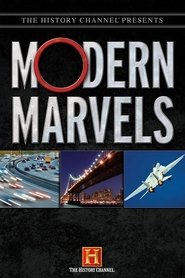
Dec 1993 - present
7.8

| E1 | E2 | E3 | E4 | E5 | E6 | E7 | E8 | E9 | E10 | E11 | E12 | E13 | E14 | E15 | E16 | E17 | E18 | E19 | E20 | E21 | E22 | E23 | E24 | E25 | E26 | E27 | E28 | E29 | E30 | E31 | E32 | E33 | E34 | E35 | E36 | E37 | E38 | E39 | E40 | E41 | E42 | E43 | E44 | E45 | E46 | E47 | E48 | E49 | E50 | E51 | E52 | E53 | E54 | E55 | E56 | E57 | E58 | E59 | E60 | E61 | E62 | E63 | E64 | E65 | E66 | E67 | E68 | E69 | E70 | E71 | E72 | E73 | E74 | E75 | E76 | E77 | E78 | E79 | E80 | E81 | E82 | E83 | E84 | E85 | E86 | |
|---|---|---|---|---|---|---|---|---|---|---|---|---|---|---|---|---|---|---|---|---|---|---|---|---|---|---|---|---|---|---|---|---|---|---|---|---|---|---|---|---|---|---|---|---|---|---|---|---|---|---|---|---|---|---|---|---|---|---|---|---|---|---|---|---|---|---|---|---|---|---|---|---|---|---|---|---|---|---|---|---|---|---|---|---|---|---|
| S1 | ||||||||||||||||||||||||||||||||||||||||||||||||||||||||||||||||||||||||||||||||||||||
| S2 | ||||||||||||||||||||||||||||||||||||||||||||||||||||||||||||||||||||||||||||||||||||||
| S3 | ||||||||||||||||||||||||||||||||||||||||||||||||||||||||||||||||||||||||||||||||||||||
| S4 | ||||||||||||||||||||||||||||||||||||||||||||||||||||||||||||||||||||||||||||||||||||||
| S5 | ||||||||||||||||||||||||||||||||||||||||||||||||||||||||||||||||||||||||||||||||||||||
| S6 | ||||||||||||||||||||||||||||||||||||||||||||||||||||||||||||||||||||||||||||||||||||||
| S7 | ||||||||||||||||||||||||||||||||||||||||||||||||||||||||||||||||||||||||||||||||||||||
| S8 | ||||||||||||||||||||||||||||||||||||||||||||||||||||||||||||||||||||||||||||||||||||||
| S9 | ||||||||||||||||||||||||||||||||||||||||||||||||||||||||||||||||||||||||||||||||||||||
| S10 | ||||||||||||||||||||||||||||||||||||||||||||||||||||||||||||||||||||||||||||||||||||||
| S11 | ||||||||||||||||||||||||||||||||||||||||||||||||||||||||||||||||||||||||||||||||||||||
| S12 | ||||||||||||||||||||||||||||||||||||||||||||||||||||||||||||||||||||||||||||||||||||||
| S13 | ||||||||||||||||||||||||||||||||||||||||||||||||||||||||||||||||||||||||||||||||||||||
| S14 | ||||||||||||||||||||||||||||||||||||||||||||||||||||||||||||||||||||||||||||||||||||||
| S15 | ||||||||||||||||||||||||||||||||||||||||||||||||||||||||||||||||||||||||||||||||||||||
| S16 | ||||||||||||||||||||||||||||||||||||||||||||||||||||||||||||||||||||||||||||||||||||||
| S17 | ||||||||||||||||||||||||||||||||||||||||||||||||||||||||||||||||||||||||||||||||||||||
| S18 | ||||||||||||||||||||||||||||||||||||||||||||||||||||||||||||||||||||||||||||||||||||||
| S19 | ||||||||||||||||||||||||||||||||||||||||||||||||||||||||||||||||||||||||||||||||||||||
| S20 | ||||||||||||||||||||||||||||||||||||||||||||||||||||||||||||||||||||||||||||||||||||||
| S21 | ||||||||||||||||||||||||||||||||||||||||||||||||||||||||||||||||||||||||||||||||||||||
| S22 | ||||||||||||||||||||||||||||||||||||||||||||||||||||||||||||||||||||||||||||||||||||||
| S23 |
Browse episode ratings trends for Modern Marvels. Simply click on the interactive rating graph to explore the best and worst of Modern Marvels's 705 episodes.
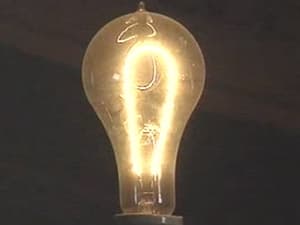
S5 Ep5
9.0
21st Sep 1997
Probably Thomas Edison’s best-known invention is the electric light. But the familiar light bulb is only the most obvious element of Edison’s accomplishment. He also created from scratch a delivery system for his light. His invention literally changed the world, putting the power of electricity at our fingertips. In 1878, Edison said: “The electric light is the light of the future. And it will be my light.” This is the story of how he and his team raced against competitors to make good his word.
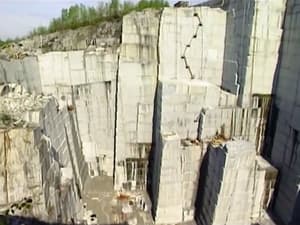
S8 Ep28
8.5
18th Sep 2001
Dynamite explodes hills to bits, drills divide sheer stone walls, 400,000-pound blocks are pulled from pits by giant cranes, and men work around the clock to wrest rock out of the earth. Not diamonds or gold…rock, the raw material of civilization! Without rock, modern society wouldn't exist. Roads, sewers, dams, bridges, buildings, paint, glue, make-up, antacids, and even chewing gum need crushed stone. From ancient days to the present, we explore the evolution of quarrying techniques.
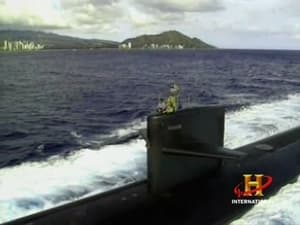
S8 Ep25
8.4
28th Aug 2001
The most priceless jewels in the arsenals of a handful of countries, some nuclear submarines carry more firepower than all the bombs dropped in history. Since the 1950s, these lethal steel sharks have been a cornerstone of U.S. defense policy. The Cold War launched an underwater race for supremacy with the Soviet Union. The result: engineering miracles, which roam 70% of the earth’s surface, providing deterrence to enemies, intelligence about adversaries, and an abiding sense of dread.

S6 Ep20
8.3
15th Mar 1999
Meet the Strong Men and Women who go beyond mere fitness to pursue major muscle mass–from ancient Greeks, to performers in the 1800s astounding audiences with feats of strength, to the body builders of California’s Muscle Beach! Lou Ferrigno and other stars share stories of the pursuit of muscle. Also looks at the effect of steroids.
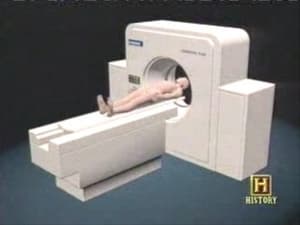
S6 Ep11
8.3
7th Dec 1998
The story of medical imaging, the technology that allows us to see inside the human body, is full of amazing stories. Learn how X-rays were discovered in 1895, completely by accident; how ultrasound was developed to locate enemy submarines, and how the CAT Scan might never have been built if it weren’t for The Beatles!
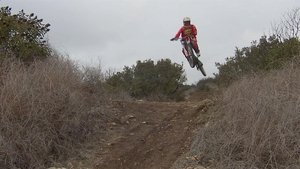
S15 Ep5
8.3
6th Mar 2008
Witness some mind-blowing feats of strength starting with the world's most powerful elevators. Discover the world's strongest tire, the strongest mountain bike, the world's strongest land transport vehicle that carries the Space Shuttle & strongest home blender.
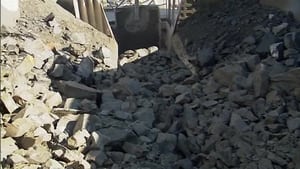
S14 Ep41
8.3
3rd Dec 2007
From the Stone Age, to the Space Age, we've built our world from rocks. With moon rocks located at NASA's Johnson Space Center.
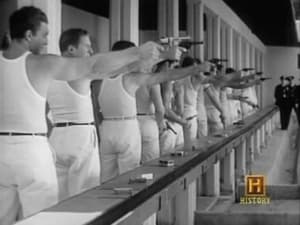
S8 Ep39
8.3
1st Dec 2001
Discover how military and police personnel, as well as private citizens, hone their shooting skills with one of the oldest of training techniques when we review the history of firing ranges–from a simple knot on a tree, old bottles, rusted tin cans, and highway signs to high-tech targets and advances in weaponry.
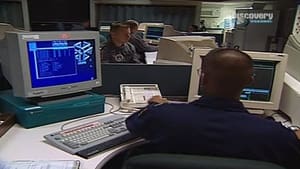
S5 Ep12
8.3
27th Oct 1997
Journey inside the top-secret headquarters of NORAD–the North American Aerospace Defense Command–a binational military command composed of the United States and Canada. Established in 1958 during the height of the Cold War, NORAD’S initial mission was air defense against a bomber attack by the Soviet Union. We see how its primary mission has changed through the years, and go inside the Cheyenne Mountain Operations Center, one of history’s most ambitious underground building projects.
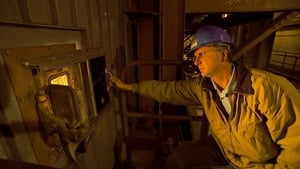
S15 Ep2
8.2
14th Jan 2008
Carbon is the chemical basis of all known life and yet this simple element is also the foundation of modern technology. Carbon burns hotter, cuts deeper, insulates more thoroughly and absorbs more fully than any other material. See why carbon is the key both in heavy-duty industries, as well as in tools like the graphite pencil, the charcoal water filter, and the diamond saw blade.

S5 Ep8
8.2
5th Oct 1997
Reviews the revolution in home improvement and glimpses the kitchen of tomorrow. Included: the development of the stove, sewing machine, refrigerated air, washing machine, vacuum cleaner, toaster, and mixer.
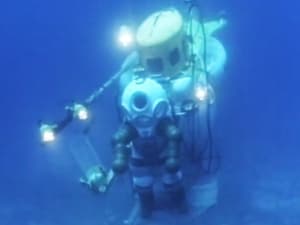
S6 Ep27
8.1
12th Jul 1999
In antiquity, a hollow reed served as an underwater link to oxygen. As in days of old, humans still need self-contained breathing equipment for a variety of reasons–food-gathering, commercial, recreational, military, and scientific. Dive with the best as we test scuba diving’s past, and look to a future of mechanical gills.
S15 Ep29
8.0
18th Sep 2008
Learn about fungal organisms that live within our bodies, grow beneath our feet, float in the air and help create some of the foods and beverages we consume.
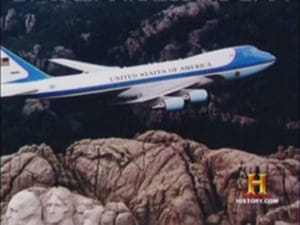
S11 Ep53
8.0
20th Oct 2004
The vehicles that transport the President of the United States aren’t your ordinary planes, trains, and automobiles. They are top-secret. And for your Average Joe, there’s only two ways to find out what they’re really like inside–either get elected or watch Presidential Movers on Modern Marvels.
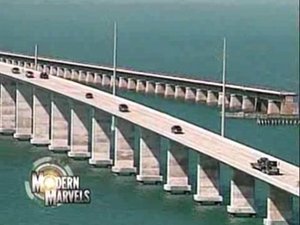
S10 Ep53
8.0
3rd Sep 2003
A spectacular roadway nearly 120 miles long, the Overseas Highway links mainland Florida with the Florida Keys, and contains 51 bridges, including the Seven-Mile Bridge. A boat was the only mode of travel from Miami to Key West until oil tycoon Henry Flagler completed his railroad line in 1912. After a 1935 hurricane destroyed 40 miles of track, the scenic highway was built using Flagler’s bridges. A $175-million refurbishment that ended in 1982 resulted in today’s remarkable Overseas Highway.

S9 Ep10
8.0
5th Mar 2002
For millennia, luxury toys have functioned as flashy instruments of affluence, authority, and identity and driven many kingly consumers to covet, create, and purchase these status symbols. From the Roman Emperor Caligula’s special barges to Carl Faberge’s impossibly intricate eggs, from plasma screen TVs to $600,000 Bentleys and Rolex watches, we examine spectacular personal possessions–paeans to the lords of a consumer culture that grows richer and technologically more sophisticated daily.
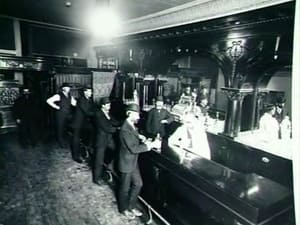
S8 Ep21
8.0
27th Jun 2001
From a computerized liquor-dispensing system in modern L.A., to a ladle and a tin cup in an 1850′s mining camp, MODERN MARVELS investigates the history and technology of the American saloon.
S7 Ep14
8.0
31st May 2000
The plane’s on the runway and revving up for our flight of power and whimsy. The panorama reveals some amazing machines–from vintage aircraft to homemade winged wonders to posh private jets. It’s a tale that merges technological progress and the fantasies of an unique type of person, who refuses to be grounded by earth’s surly bonds.
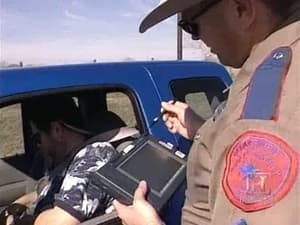
S7 Ep10
8.0
15th Mar 2000
When police forces were born in the 1800s, British “bobbies” made due with a billy club. Public wariness and institutional resistance to change held back technological advances for much of the 20th century. But in the last decades, police have been swept up in a technological revolution that has transformed nearly all aspects of crime fighting.

S6 Ep12
8.0
16th Dec 1998
To run faster, jump higher, and play longer–the ultimate goal of all athletes. But when training runs its course, science and technology jump in. Explore the history and technological advances in everything from athletic shoes to football gear. And leap into a future filled with radar-enhanced baseballs and virtual-reality stadiums.
S6 Ep6
8.0
12th Oct 1998
San Francisco's Oakland Bay Bridge stands as an incredible feat of engineering against the nearly impossible. Once chosen as one of the seven engineering wonders of the modern world, it features an unique double suspension structure in its west end. Join us as we cross this triumph of construction, while we visit its past and look to its future.

S5 Ep19
8.0
15th Feb 1998
It started as an idea at a French dinner party and became the symbol of the free world. The story of France's gift to the US reveals a 20-year struggle to design and build the world's largest monument–using paper-thin copper sheets.
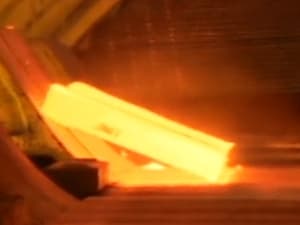
S5 Ep17
8.0
18th Jan 1998
For over a century, the US steel industry was a powerful symbol of the nation's industrial might. Steel helped explode the stock market into an overnight powerhouse, and transformed a country of farmers and merchants into a nation of visionary builders. But America's domination of the market would meet new challenges in the 1970s.

S5 Ep14
8.0
3rd Nov 1997
Everyday 3-million passengers board the 10,000 aircraft flying at any given moment. Go behind the scenes at international airports to see the inner workings that make commercial air travel possible–from ground control in air traffic towers, the plane's cargo holds and high-tech security, and back to earth at customs.
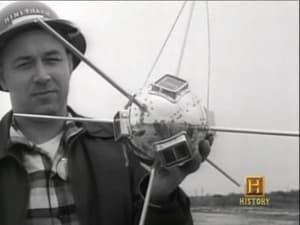
S5 Ep3
7.9
1st Sep 1997
Strong enough to survive their fiery launch into orbit, sophisticated enough to provide life-saving images or relay tens of thousands of phone calls at the same time. By monitoring weapons systems and troop movements, these "eyes in the sky" may be the difference between security and annihilation. From the futuristic visions of a British sci-fi writer to creations of a German rocket designer for the Nazi war machine to the Cold War technological race, we review the satellites that link our world.
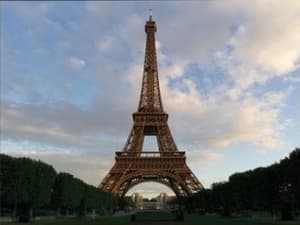
S2 Ep4
7.9
22nd Jan 1995
To the people of France, and to citizens of the world, Gustav Eiffel’s 320-meter Tower is more than an unsurpassed technological and engineering wonder, conceived and built to astound the public at the 1889 Paris Exposition…it is a symbol of triumphant spirit, demonstrating how an innovative metal matrix can form a structure whose posture reinforces an aesthetic of glory.
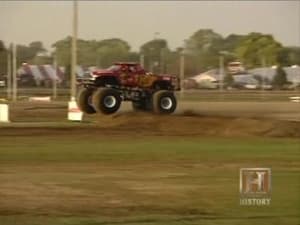
S8 Ep10
7.9
19th Mar 2001
Ride shotgun in our rollicking history of the Monster Truck, and meet the father of the mythic beast, Bob Chandler, whose EM Bigfoot /EM gave birth to the sport in a cornfield years ago! Weighing 10,000 pounds, the behemoths entertain using brute force. Thrill to breathtaking stunts in California, Indiana, and Florida, as mounted cameras demonstrate the shakes, rattles, and rolls drivers experience; and meet the men who race these mechanical mammoths in one of the world's fastest-growing motorsports.
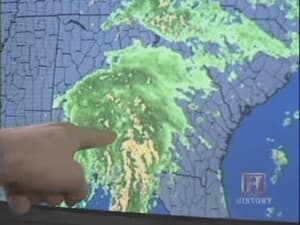
S6 Ep15
7.9
1st Jan 1999
A study of the discoveries, inventions, and technological advances that have helped us understand and predict weather accurately. From simple observations made by early humans, to early instruments such as thermometers and barometers, to Doppler radar and satellite imaging, we’ll see how man has tried to harness weather.
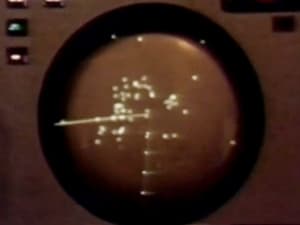
S5 Ep9
7.9
12th Oct 1997
Examines the history of radar, focusing on its role in the Allies’ victory in WWII–from the Chain Home Network, rudimentary radar towers that ringed England’s eastern coast, to the role of Boston’s MIT in developing a smuggled English secret, the cavity of magnetron.
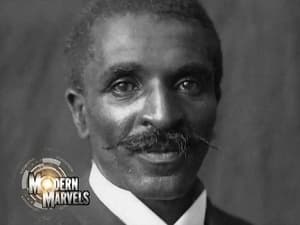
S12 Ep8
7.8
15th Feb 2005
One of the 20th century’s greatest scientists, George Washington Carver’s influence is still felt. Rising from slavery to become one of the world’s most respected and honored men, he devoted his life to understanding nature and the many uses for the simplest of plant life. His scientific research in the late 1800s produced agricultural innovations like crop rotation and composting. Part of the “chemurgist” movement that changed the rural economy, he found ingenious applications for the peanut, soybean, and sweet potato. At Tuskegee Institute, Dr. Carver invented more than 300 uses for the peanut, while convincing poor farmers to rotate cotton crops with things that would add nutrients to the soil. A visionary, Carver shared his knowledge free of charge, happy in his Tuskegee laboratory where he could use his gifts to help others.
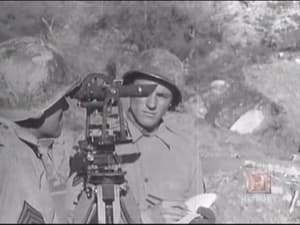
S5 Ep18
7.8
8th Feb 1998
Meet some of the most important, yet least-recognized, warriors–the battlefield engineers who lay the groundwork for oncoming conflicts. We'll cover combat engineering from ancient Rome to modern-day Iraq, and take a look at the "Next Big Thing".
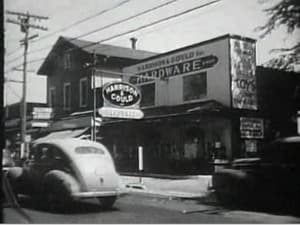
S8 Ep20
7.8
26th Jun 2001
Modern Marvels explores the evolution and future of the things that hold our world together. From the blacksmith to the Home Depot, it’s the story of nails, screws, mollybolts, duct tape, and super glue. We will visit one of the oldest hardware stores in America, Placerville True Value and wander the aisles of the mega-giants like Home Depot and OSH Hardware. This program chronicles the rise of the hardware “Big Box” super stores and how the mom and pop, local hardware stores, still manage to survive.
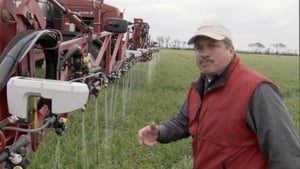
S14 Ep22
7.8
20th Jun 2007
Without it one third of us would starve. Modern Marvels: Fertilizer tours the places that harness the vital nutrients that enrich the soil...that grow the crops...that feed us.

S13 Ep15
7.8
24th May 2006
Remember “brick” cell phones, Pac-Man, Rubik’s Cube, Sony Walkman, and the first music CDs? Remember all the new and exciting gadgets of the 1980s? Join us as we investigate the transition from Industrial to Information Age–a digital decade dedicated to ergonomics and entertainment. The microchip ushered in an era that revolutionized the way we work, play, and communicate. And we tour Silicon Valley–birthplace of some of the greatest inventions from an amazing time of change, including the modern personal computer. Steve “Woz” Wozniak tells us about the evolution of Apple computers, and we talk to Sony–makers of the Walkman, Betamax, and the first CD players. A visit to the Computer History Museum shows fun technological “artifacts”, primitive by today’s standards. At Intel, makers of the first microchips, we learn why technology moves at such a fast pace. We also take a ride in a DeLorean DMC-12 sports car–few things moved faster.
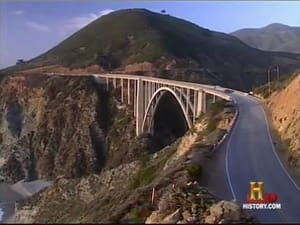
S11 Ep4
7.8
4th Feb 2004
For 25 years, construction crews dug, blasted, tunneled, and bridged their way up America's West Coast along the California, Oregon, and Washington shoreline to build the Pacific Coast Highway. Historians, road and bridge engineers, and experts relate this story of perseverance, primal machines, convict labor, and engineering brilliance as we tour its scenic route. And we look at the latest technologies used to keeping it running despite floods, earthquakes, tsunamis, and landslides.
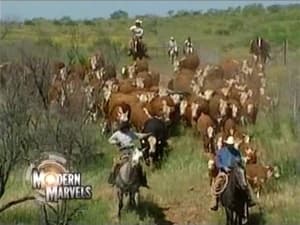
S8 Ep23
7.8
25th Jul 2001
From the 19th century’s legendary cattle drives to the million-acre ranch kingdoms that sprang to life with the end of the Open Range to 21st-century techniques that include artificial insemination, embryo transplants, and genetic engineering, we review the history of cattle ranching. We’ll ride herd with modern cowboys as they twirl ropes and brand calves, and look to the cattle ranch of the future, where cloning will produce the ideal meat-producing steer with a consistently juicy, low-fat carcass.

S8 Ep7
7.8
22nd Feb 2001
The household garage serves as the at-home sanctuary for the modern American male. Most men consider themselves to be “handy around the house”. Fathers and husbands see it as their role to provide for and take care of the family’s home and possessions. From lawn care products to snow removal and outdoor cooking, the Garage Gadgets of Do-It-Yourselfers have evolved over decades to face the ever-changing challenges of maintaining a home.
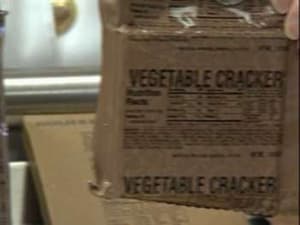
S8 Ep1
7.8
8th Jan 2001
From battle armor to bubble gum, you might be surprised by what soldiers have carried into battle–and what they'll carry in future wars. In this look at the development of weapons–from the Roman soldier's gladius to the M16 assault rifle to infrared scopes and biological weapons protection–we also discover the evolution of body armor–from knights to Kelvar-protected "Land Warriors". And we'll also find out what the "Future Warrior" will look like.

S6 Ep10
7.8
23rd Nov 1998
Plastics are everywhere–the home, the workplace, the car, the human body, outer space, and most conspicuously, the garbage heap and landfill. Artificially created test-tube material, plastic can’t be returned to nature. Will we drown in a sea of plastic? Join us as we review this protean substance’s past and future.

S20 Ep1
7.7
21st Feb 2021
Adam Richman visits baking behemoth Entenmann’s to see how they keep up with America’s insatiable demand for delicious and dunkable chocolate chip cookies. Then, find out how Otis Spunkmeyer creates the cookies you find at some of the biggest restaurant chains in America! From Fortune Cookies to your favorite childhood treats, Adam becomes a cookie connoisseur in this episode for all things cookies.
S13 Ep26
7.7
28th Jul 2006
Skyscrapers are an extraordinary feat of human engineering: exposing millions of pounds of concrete and steel to the enemy forces of wind and gravity. Starting with the foundation and on through the support structures and concrete flooring, every piece of these superstructures has to be super-strong. Go behind the scenes with the five tools that make these buildings possible: the foundation drill rig, the tower crane, the impact wrench, the power trowel, and the total station.
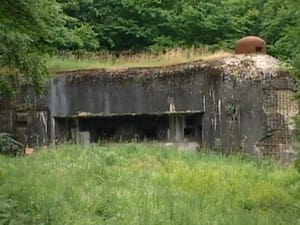
S7 Ep24
7.7
10th Sep 2000
The Maginot Line, a defensive string of large and small forts built during the years between World War I and World War II, was intended to forestall another invasion by aggressive Germany. Despite the Treaty of Versailles, France saw that it was only a matter of time before Germany would rise again and threaten France. News of northern neighbor Belgium’s neutrality left France with an exposed flank, which would ultimately be the Maginot Line’s weak point-the Germans were able to outflank the line almost entirely, readily conceding the Line’s impregnability while conquering the country.
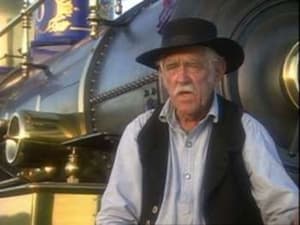
S3 Ep8
7.7
20th Oct 1995
The year was 1869 and America had just completed the greatest building achievement in its history–the Transcontinental Railroad. A thin ribbon of steel and wood now connected East and West. But the fledgling country now faced an even greater challenge–how to harness the awesome potential of the railroad to tame the still wide-open and wild West.
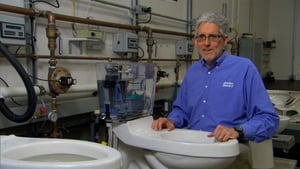
S15 Ep20
7.7
30th Jun 2008
The most used room in the home is the bathroom and it's full of tech. Visit Kohler and see the new digitally controlled uber-shower, complete with steam, music and LED chromatherapy. Check out American Standard's Champion 4--the supposedly "uncloggable" toilet. Learn all about the low-flow alternatives for showers and toilets. Touch-free fixtures and a futuristic toilet from Japan ensure a more hygienic restroom experience. Finally, what is New York City's latest hi-tech solution for going on the go?
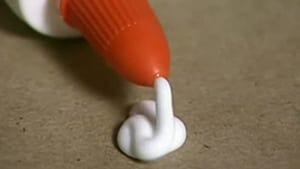
S12 Ep24
7.7
18th May 2005
It’s Super! It’s Krazy! And it can be found in everything from carpet to computers, books to boats, shoes to the Space Shuttle. It’s even used in surgery! Without it, our material world would simply fall apart. In this episode, we’ll visit the stuck-up, tacky world of glue. Glue’s sticky trajectory spans human history and we’ll cover it all–from Neolithic cave dwellers who used animal glue to decorate ceremonial skulls to modern everyday glues and their uses, including Elmer’s glue, 3M’s masking and Scotch tape, and the super glues. Remember the Krazy Glue commercial in which a man held himself suspended from a hard hat that had just been glued to a beam? Well, that 1970s vintage ad understates the power of glue. With the help of a crane, we’re going to hoist a 6,000-pound pickup truck off the ground by a steel joint that’s been bonded with glue!
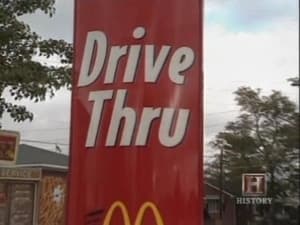
S8 Ep35
7.7
13th Nov 2001
Join us for a ride through the history of car-culture commerce from the first gas station to the drive-thru funeral parlors and wedding chapels of today. We chronicle the birth of the first drive-in restaurants that paved the way for a billion-dollar fast-food dynasty, and feature many lesser-known drive-thru venues, such as dry cleaners, flu-shot clinics, liquor stands, and drug stores. And we’ll take a journey to the future to see what products might be passing through the drive-thru of tomorrow.
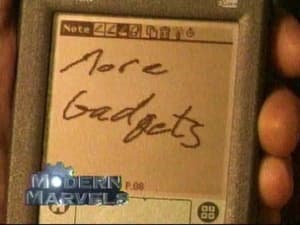
S8 Ep22
7.7
24th Jul 2001
A salute to the tools and toys that have stood the test of time–from the Zippo lighter to the Palm Pilot, the 21st century’s first great gadget. As we focus on the technology behind familiar gadgets, we see the subtle ways they have changed our lives. Other items include the flashlight, transistor radio, safety razor, and the metronome. We also go behind the scenes at Herbst-Lazar-Bell, a cutting-edge industrial design firm, and Gadget Universe, a fledgling retailer trying to topple the Sharper Image.
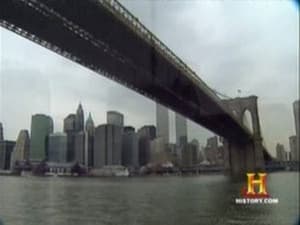
S6 Ep32
7.7
23rd Aug 1999
Much of New York City’s history can be viewed via its bridges–all 18 that connect Manhattan Island to its neighbors. Join us for a look at these architectural masterpieces from the age of iron and steel; and, see how they have changed destinies, linking some to opportunity, others to ruin.
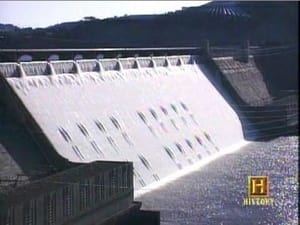
S1 Ep1
7.7
10th Dec 1993
The world’s largest concrete dam–and the largest concrete structure in the world–lies on the Columbia River in the State of Washington. B uilt in 1931, it is also one of the largest hydroelectric power plants in the world.
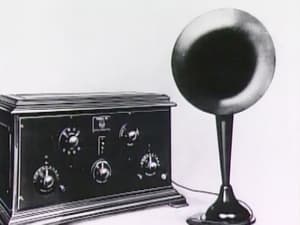
S5 Ep4
7.6
7th Sep 1997
To some it was a miracle. Others call it the triumph of illiteracy. Somewhere between adoration and scorn. Somewhere between the carrier pigeon and television. There was and is radio. We take radio for granted. Perhaps think of it as a second rate medium. A poor relation to our pride and joy, television. But fewer than a hundred years ago, the discovery that people could communicate over great distances without wires, galvanized the world to a degree that has been equalled.
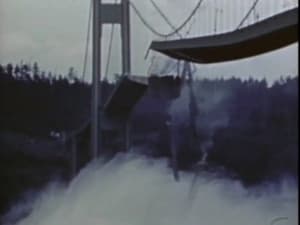
S6 Ep21
7.6
30th Mar 1999
Throughout history, the builders and engineers who paved our way out of the caves and into the modern world have also caused some of our worst disasters. What happens when their calculations prove wrong and it all comes tumbling down? From Hammurabi’s days, when the first building laws were instituted, to today’s potential nuclear or chemical disasters that can spell death for thousands, we’ll take a harrowing 2-hour tour through some of history’s greatest engineering mistakes.

S11 Ep63
7.6
23rd Nov 2004
In this hour, we examine a massive oil tanker explosion that killed nine; a subway tunnel cave-in that swallowed part of Hollywood Boulevard; a freighter plane crash that destroyed an 11-story apartment building; an historic molasses flash flood; and a freeway ramp collapse that buried construction workers in rubble and concrete. Investigators from NTSB, Cal/OSHA, and Boeing, structural and geo-technical engineers, and historians explain how so much could have gone wrong, costing so many lives. And aided by computer graphics, footage and photos of the disasters, and visits to the locations today, we show viewers what caused these catastrophes and what design experts have done to make sure they never happen again.

S8 Ep33
7.6
23rd Oct 2001
More than 2-million people die in the U.S. each year. That works out to about 5,500 burials a day, with roughly 80 percent taking the long goodbye in a casket, and the remaining 20 percent electing to be cremated or finding some alternative method of crossing eternity's threshold. We take a look at dealing with the dead throughout the centuries, and at today's $20-billion funeral industry. Any way you look at it, it's a healthy business, with new generations of customers year after year!
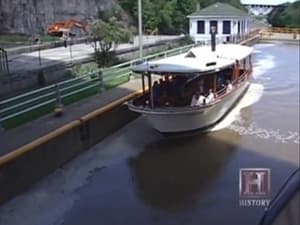
S7 Ep20
7.6
31st Jul 2000
The Erie Canal was America’s first superhighway. It was a narrow ribbon of water carved through sheer rock and untamed wilderness. It featured an ingenious network of stone locks and aqueducts. Skeptics called it “Clinton’s Ditch,” but visionaries saw it as the gateway to a gleaming future. An engineering marvel when it was built some called it the Eighth Wonder of the World.
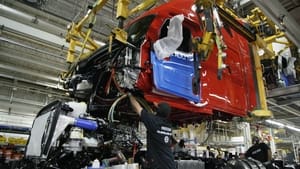
S21 Ep3
7.6
8th Aug 2021
Adam Richman explores how a legendary long-hauler meticulously custom-builds each truck at Daimler.
S15 Ep13
7.6
14th May 2008
Nikola Tesla's bizarre vision of the future brought him failure, but his genius electrified the world.
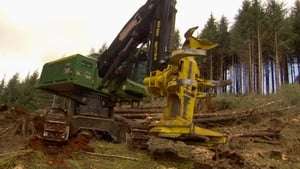
S14 Ep24
7.6
18th Jul 2007
They brought down the forests and built up the pyramids. They're a cut above for construction, salvage, demolition - and they even make music and some have used them to torture.
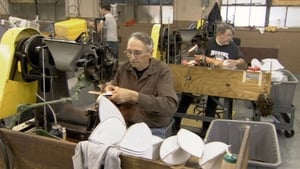
S14 Ep1
7.6
17th Jan 2007
Examining the technology and evolution of balls used in sports. Included: a tour of the Wilson Football Factory Ohio; the Rawlings baseball factory Costa Rica and the Baseball Hall of Fame in Cooperstown, N.Y. And also "juego de pelota" - the ancient Mesoamerican ball game.
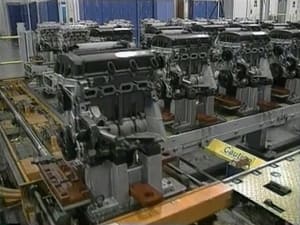
S9 Ep16
7.6
18th Apr 2002
Story of the development of engines and motors, with particular emphasis on the ones that have profoundly changed society. Beginning with the steam engine, we see how it was created, how it works, and how it led to the Industrial Revolution. We review the electric motor, internal combustion engine, jet engine, and rocket engine, and conclude with a look at futuristic engine technologies, including hydrogen-powered cars and microtechnology engines so small that they fit on the tip of a finger.
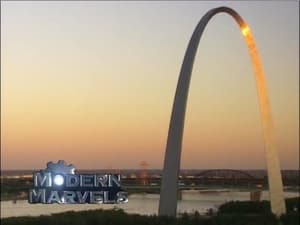
S8 Ep40
7.6
4th Dec 2001
It is a majestic structure that rises boldly over the Mississippi river–40,000 tons of steel and concrete that create the biggest arch of its kind in the world. Nothing like it had ever been built before, nor attempted since. We’ll see how its simple and elegant form results from remarkable achievements in construction and engineering.
S8 Ep15
7.6
21st May 2001
In this history of international airports, we focus on several airports to illustrate the developments and technology of their construction and operation, beginning with Miami’s Dinner Key and including New York City’s LaGuardia and JFK, London’s Gatwick, Dulles near Washington, D.C., Los Angeles’ LAX, Denver International, Japan’s Kansai, and Korea’s new Inchon. It all began on a farmer’s field near a flat beach–the next step may see them expand into interplanetary platforms!

S8 Ep12
7.6
16th Apr 2001
From colossal devices designed to save the world to mind-expanding, world-shrinking machines, we trace the evolution of mice and menus. Learn about the world’s most powerful computer, IBM’s ASCI White, that operates at 12-trillion calculations a second. See how the first room-sized computers, such as ENIAC, changed the world. Bite into Apple’s history, the machine that made computers a household appliance. And peer through a microscope to see the molecular computers of the future.
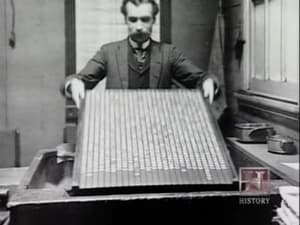
S6 Ep25
7.6
21st Jun 1999
Whether it jingles in our pockets or folds in our wallets, it flows by the billions from government factories that have mastered the art of making it.
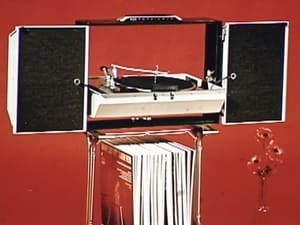
S6 Ep16
7.6
25th Jan 1999
The ability to transmit sound in stereo transformed the music of life into a rich symphony of sound. For over 100 years, enthusiasts and scientists have worked to create the ideal listening experience. From Thomas Edison’s early phonograph to today’s digital revolution, we examine this multi-billion dollar business.

S5 Ep13
7.6
28th Oct 1997
Feel the earth move under your feet and dig into the fascinating history of earthmoving equipment–from invention of the simple spade to today’s powerful steam shovels. Meet the legendary giants like John Deere, Jerome Case, and the founders of Caterpillar, who helped forge America’s monolithic construction industry.
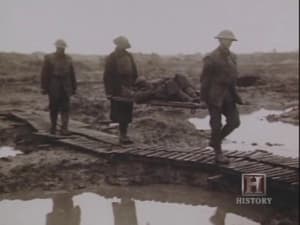
S6 Ep24
7.6
25th May 1999
“He who would become a surgeon should join the army and follow it,” Hippocrates counseled nearly 2,500 years ago. In this history of medicine under fire, we see how a small army of medics, nurses, surgeons, stretcher-bearers, and ambulance drivers, races to keep pace with the deadly advances of war.

S10 Ep60
7.6
15th Oct 2003
In the land of Mardi Gras, jambalaya, and zydeco, exists an engineering marvel called the Lake Pontchartrain Causeway that seems to go on forever. Two ribbons of concrete span the largest inland body of water in Louisiana, and at nearly 23.87 and 23.88 miles long, these two spans form the world’s longest automobile bridge. At midpoint–12 miles out–water surrounds travelers who are unable to see either shoreline. The bridge is so long, it actually transverses 1/1000th of the earth’s circumference!

S10 Ep2
7.6
7th Jan 2003
Some of the most imposing structures ever built, medieval castles withstood both bloody assaults and the test of time. Designed like machines with nearly every architectural detail devoted to defense, castles represented the perfect fusion of form and function. Journey back to that unruly era as we examine the complexity of their construction and the multipurpose they served–homes to kings and nobles, economic centers, courthouses, treasuries, prisons, and torture chambers.
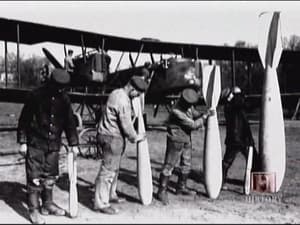
S6 Ep13
7.6
23rd Dec 1998
Bombs…the most feared and powerful weapon in any nation’s arsenal. What began as incendiary devices in the 7th century has evolved into weapons that can literally blow the human race off the face of the earth! From the use of diseased carcasses flung over castle walls to Greek Fire to today’s smart bombs, we review the evolution of bombs.
S17 Ep4
7.6
19th Nov 2010
They are catastrophic failures with deadly consequences. Caused by a single spark or a massive collapse, these disasters reveal one thing–the danger inherent in our most common industries. From a massive oil spill to refinery blaze to a downed plane, find out what went wrong… and how to prevent the next engineering disaster.
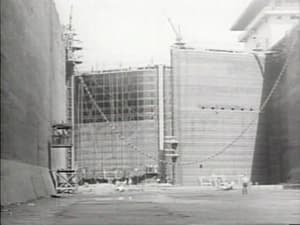
S1 Ep3
7.5
4th Mar 1994
Chronicles one of the most incredible engineering feats of all time: construction of the 51-mile canal that took 10 years to build and employed over 40,000 workers, 6,000 of whom died of yellow fever, malaria, and other horrors. An earlier, 9-year attempt by the French ended in failure and cost 20,000 lives.
S16 Ep16
7.5
27th May 2010
It's full steam ahead when we drop in at Jay Leno's garage as Jay fires up two of his classic steam cars and takes viewers for a couple of rides. Jay also shows off his 11-ton steam engine built in 1860, back when pigs had to be slaughtered to keep it lubricated. In northern Nevada, fire up a coal burning boiler and get a 100-year-old steam locomotive chugging across the rugged landscape. In New Orleans, board an authentic paddlewheel steamboat. Trek to the Southern California desert where geothermal steam rushes up from the ground and drives electricity producing turbines, powering over 300,000 homes. In New York City, find out why manmade steam surges into some of the world's most famous skyscrapers. Steam clean some very dirty machines, and do a little laundry, too. And ride a steam-driven carousel and play with some strange, steam-powered robots that are part of a movement called–what else–"steampunk."
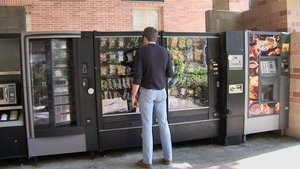
S15 Ep24
7.5
24th Jul 2008
Every 15 minutes, Americans insert over 3.5 million coins into vending machines. What are they buying? How do the machines work?
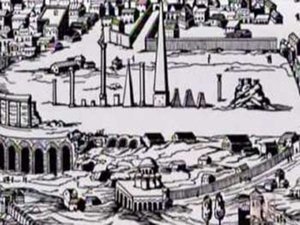
S13 Ep43
7.5
21st Sep 2006
Teamed with leading archeologists and experts, peel back the layers of the past--to reveal a hidden history that hasn't seen the light of day for ages.
S13 Ep6
7.5
21st Feb 2006
Examining unusual World War II weapons that were in the planning or testing stages for use by the Axis powers. Included: an assault rifle that could shoot around corners; a death ray capable of boiling people; and an army in space.
S12 Ep44
7.5
26th Aug 2005
In any battle, the key to victory is the ability to strike the enemy without them knowing what hit them. Within the US arsenal one such weapon can go into harm’s way, deliver 40,000 pounds of either conventional or nuclear bombs, and slip away unobserved–the B-2 Stealth Bomber. With its origins in single-wing experimentation in Germany in the 1930s, the B-2 was developed under a cloak of secrecy. But when that cloak was lifted, the world was awed by what stood before them. Able to fly over 6,000 miles without refueling, it can reach whatever target the US military wants to attack and deliver its awesome array of laser-guided weapons with pinpoint accuracy. Using state-of-the-art technology, including over 130 onboard computers, and shrouded by a mantle of stealth, it’s undetectable by any radar.
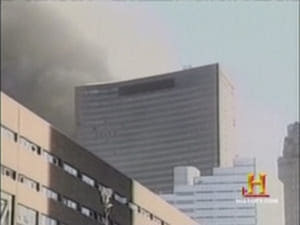
S11 Ep61
7.5
16th Nov 2004
In this hour, death seeps out of the ground into a neighborhood sitting on a toxic waste dump at Love Canal in New York; soldiers die during Desert Storm in 1991 when software flaws render Patriot Missiles inaccurate; on September 11, 2001, World Trade Center Building #7 wasn’t attacked, but seven hours after the Twin Towers collapsed, it too is mysteriously reduced to a pile of rubble; a night of revelry in Boston turns the Coconut Grove nightclub into an inferno that kills over 400 people in 1942; and the science of demolition is put to the test and fails when a building in Rhode Island, the “Leaning Tower of Providence”, stands its ground.
S11 Ep34
7.5
1st Sep 2004
When opened on October 25, 1931, the George Washington Bridge was the longest suspension bridge in the world. Today, standing as a main traffic artery between Manhattan and New Jersey, the bridge referred to by locals as the “GW” is the busiest in the world, carrying nearly 320,000 cars each day. We’ll examine the construction methods employed that made the bridge an anomaly, coming in both under budget and ahead of schedule, and see why the GW is distinguished in a city of great bridges.
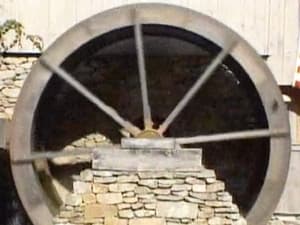
S9 Ep18
7.5
14th May 2002
Spinning your wheels isn’t just going around in circles. In fact, it’s revolutionary–literally. The history of civilization has turned on the wheel, and we have traveled as far as we have because of it. One of the six simple machines and perhaps the most important invention in the history of mankind, the wheel has been essential in all aspects of life–from farming to fighting, traveling to trading. Features interviews with scientists, historians, philosophers, millers, potters, and spinners.
S8 Ep31
7.5
16th Oct 2001
From the riveted blue jeans of the old ’49ers, working the gold mines of California, to the million-dollar suits astronauts wear in outer space, we see how “dressing for success” often means being able to get the job done. With the right work clothes, people have been able to go anywhere and do any job.
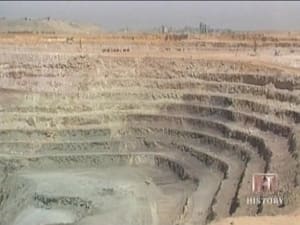
S8 Ep29
7.5
19th Sep 2001
Half a mile below the earth’s surface, men mine for rough diamonds–a pure carbon substance. Brilliant when cut and polished, they are marketed as the most precious gem in the world. From the earliest mines of the 4th century BC to today’s technological wonders in South Africa, we explore the history and technology of the diamond mine.
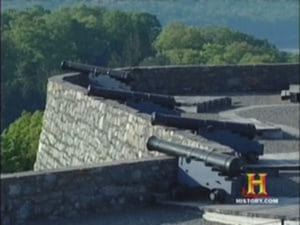
S8 Ep27
7.5
11th Sep 2001
For nearly 200 years, the U.S. Military Academy at West Point, New York, has trained students in the art of war. Located 50 miles north of New York City, its 25 buildings overlook the Hudson River on a 16,000-acre government reserve. During the Revolutionary War, West Point stood guard over the river, protecting it with artillery and a 136-ton chain! From humble beginnings, the academy grew with the nation, as each war forced changes to keep pace with America’s expanding world responsibilities.

S7 Ep9
7.5
14th Mar 2000
Don’t look now, but your office is a technological marvel. From the humble paper clip to the revolutionary personal computer, your desk is a museum of miracles designed to make you more productive and efficient. Then why are you still at work? Here’s everything you ever wanted to know about your workplace, but were afraid to ask!
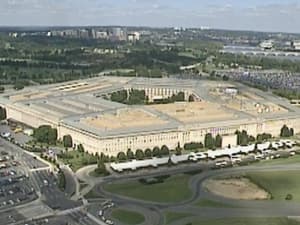
S7 Ep5
7.5
26th Feb 2000
The pentagon…The name alone conjures up an imposing image of American power and prestige. As the largest office building in the world, it serves as the headquarters of the nation’s armed forces. Every day, more than 24,000 men and women come here to work on the vital and sometimes top secret business of national defense. Beyond the pentagon’s massive size and awesome purpose looms its impenetrable mystique. We’ll take you inside this military institution, national symbol, and modern marvel.
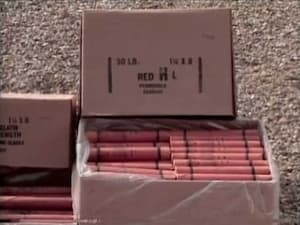
S6 Ep29
7.5
20th Jul 1999
Join us for a highly charged hour as we see why Alfred Nobel's invention of dynamite took on earthshattering dimensions as his product blasted out the natural resources that built our modern world. We also examine its impact on construction of the roads, tunnels, and dams that provide us with energy and transportation.
S6 Ep28
7.5
19th Jul 1999
Offshore drilling is one of the greaest technological dances mankind has ever attempted. From the very beginning of oil discovery, the oceans and their vast reserves became the ultimate frontier. For those willing to take the risk, the oceans offer unprecedented success and unimaginable failure.
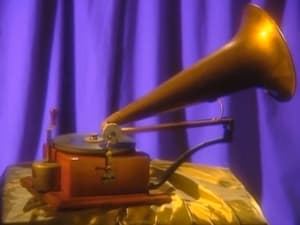
S5 Ep6
7.5
22nd Sep 1997
Thomas Edison registered over 1,000 patents, but his favorite invention was one of his first. Rare photographs and early recordings show how the young inventor and his team outfoxed Alexander Graham Bell.
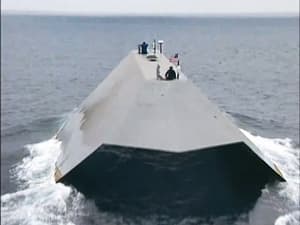
S4 Ep7
7.5
16th Feb 1997
A look at the F117 Stealth Fighter that led the pack for the Allies in Gulf Wars One and Two and virtually decimated Iraqi Air Defense. Find out how the technology allows it to approach its target without being detected by radar. Also, a look at the B2 Stealth Bomber.
S1 Ep4
7.5
20th Mar 1994
A large machine turned water city, cruise ships are exciting and new.

S20 Ep2
7.4
28th Feb 2021
Things get cheesy when Adam Richman visits a central Pennsylvanian cheese maker with an award-winning mozzarella they insist on making the authentic Italian way. And you don’t have to tell grocery giant Kroger that cheese is big business–we see how they slice, shred and package over 2.5-million lbs. of cheese per week. Adam learns all the history, incredible facts, and amazing processes behind one of America’s most beloved foods!
S15 Ep16
7.4
9th Jun 2008
Explore the world of extreme temperatures.
S17 Ep7
7.4
10th Dec 2010
Just below the surface, there's a whole different America hidden from public view. Take a revealing look at the America under our feet, from secret military installations, and experimental farms to tunnel networks and neutron lasers.
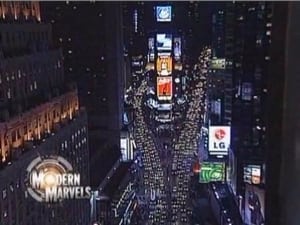
S8 Ep36
7.4
27th Nov 2001
The Crossroads of the World, New York City’s Times Square is the screaming marketplace of our culture and time. It’s urban life pushed to the limit–the most electrified, visceral, crowded, and vibrant area in the world’s most dynamic city. A unique district that forever changes its face, it sank into crime and sleaze in the 1970s, only to rehabilitate in the ’90s into a dubious family entertainment paradise. Join us for a trip to America’s Town Square at the intersection of Broadway and 7th Avenue.

S7 Ep30
7.4
17th Oct 2000
Since the ancient pharaohs’ time, the Isthmus of Suez has been the gateway to trade between East and West. It’s thought that the pharaohs could connect the Red Sea with the Mediterranean using a system of small canals; but the desert sands buried them. Not until mid-19th century did mankind readdress the problem. Since its completion in 1869, the Suez Canal has been a vital link in world trade and a point of controversy in geopolitics. Today, more than 20,000 ships transit the canal yearly.
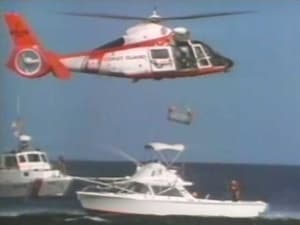
S6 Ep26
7.4
6th Jul 1999
Avalanches, earthquakes, hurricanes, bombings–all mean human tragedy unless rescuers respond within a moment’s notice of disaster. Here are the latest advances in rescue technology, including: a Searchcam system that locates buried victims, and the Jaws of Life that can extricate a person from a crushed car in seconds.
S15 Ep10
7.4
4th Apr 2008
We're living in a gadget revolution. New and unimagined gizmos solve problems that we didn't even know we had. They emerge from cutting edge think tanks and tinkerers basement workshops. Will they usher in a techno utopia, or enslave us to pocket size technology?
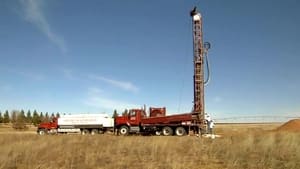
S13 Ep14
7.4
10th May 2006
The program features the quest to drill the deepest hole ever and the scientific drill ship expected to perform the feat, and also looks at drills used to recover ice cores that will unearth thousands of years of climate history.
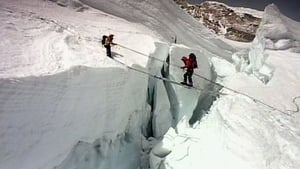
S12 Ep32
7.4
28th Jun 2005
He was the father of the future…electric lights, power systems, motion pictures, recorded sound–even the tattoo pen. Life as we know it would be inconceivable without the prodigious output of the Wizard of Menlo Park, Thomas Alva Edison. His intense focus on his work came with a hefty personal price, but his reward was a world forever changed by his genius. Years after his death, Edison's effect is seen, heard, and felt everywhere. We follow descendants of his motion-picture camera to the tops of Earth's highest mountains, to the bottoms of its deepest oceans, and even into outer space. We track his innovations in recorded sound to CDs, iPods, sophisticated movie sound, and satellite radio. And we illuminate his world of electric light, powering the world and turning night into day. Along the way, we discover a little Edison in corners of modern life less well-known and even look at his failures. From the Internet to the stock market to pay-per-view; the Wizard is everywhere.
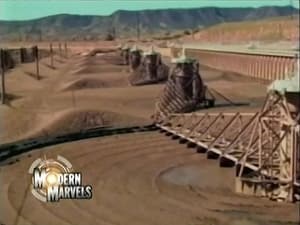
S12 Ep10
7.4
23rd Feb 2005
It’s hot, dry, deadly, and hard to ignore with close to 40% of Earth classified as desert. But in this scorching hour, the desert turns from barren wasteland into an environment rich with hope. In the Middle East, desalination of seawater now fills water needs. Americans have created booming desert communities like Las Vegas, where the Hoover Dam produces hydroelectric power and manmade Lake Mead supplies water. Native Americans farmed the desert on a small scale, but 20th-century technology begot greater opportunity. Once desolate areas of California and Mexico now grow agriculture due to irrigation, and the desert’s abundant sunshine allows solar-energy and wind-power production. And in the future, desert technology may enable colonization of planets like Mars. We also take a look at how refrigeration and air conditioning have made life in desert communities tolerable, and examine the latest in survival gear and equipment.
S7 Ep13
7.4
25th May 2000
As camping technology develops, it provides greater access to diverse outdoor environments. The earliest camping technology was developed out of necessity. Prehistoric man fashioned rudimentary backpacks and clothing out of bark and animal hide. The explorers and pioneers pushed the boundaries of the West in covered wagons, cooking over open fires, and living off the land. When men headed off to war, they returned with new camping gear and lightweight materials, which enabled further exploration. Today’s Himalayan mountaineers depend on carefully engineered clothing, tents, and boots to reach the highest peaks in the world.
S7 Ep11
7.4
17th Apr 2000
An examination of the historical development of technological tools that help science mitigate nature’s fury. It’s a survival story that begins with comprehending the force of disaster. As environmental calamities unfold, viewers witness the urgency for change that each crisis compelled and innovations designed to lower death tolls.
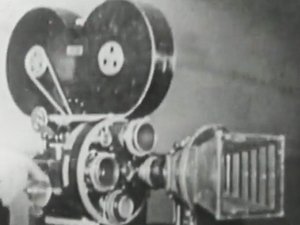
S5 Ep2
7.4
24th Aug 1997
The complete story of the feuds, the mistakes, ingenuity, and successes that made movies possible–and kept Edison at the front of the inventor pack. Includes rare early films from the Edison Studios.

S15 Ep22
7.4
17th Jul 2008
From itchy woolen union suits to comfortable briefs and boxers learn how our undergarments have evolved over the last 100 years.
S7 Ep33
7.4
25th Oct 2000
Remotely operated vehicles allow us to explore the mysteries of inner and outer space, provide firsthand glimpses of the horrors of nuclear disasters, and offer the vicarious thrill of flying planes or driving cars. From the first remote controlled vehicle, Nikola Tesla’s 1898 steam-powered boat, to underwater ROVs that locate sunken vessels and explore the ocean floor, to their use by NASA in the space program, we see how ROVs extend our range into worlds previously unreachable, unknown, or unsafe.

S3 Ep7
7.4
19th Oct 1995
A trip through time on the New York Subway beginning at the beginning– October 1904. We look at New York before the subway–a world of horse carts and elevated trains. We see early impractical experiments in transportation like the pneumatic subway or the elevated cable car. The program will deal with the technology of the subway, the construction, and financing. We look at subway stations and equipment.
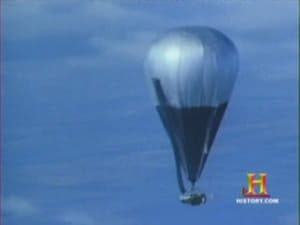
S2 Ep1
7.4
16th Dec 1994
Join us for a buoyant trip through the history of balloon flight and a tribute to the fearless pilots and engineers brave enough to push the limits of balloon technology into the next weather front, or the next frontier. We’ll demonstrate their diversified applications and talk to pioneers who designed and flew them.
S18 Ep6
7.3
28th Nov 2011
It has been said that necessity is the mother of all invention–but that is not always the case. Some strange machines are built for sheer spectacle, some a glimpse into the future or even the past, while others are just plain…Weird. Take a look at machines that specialize in high functionality and low practicality, prompting two very important questions: What is it and…how do I get one? An Alaskan navigates the Juneau waters with his homemade submarine. A California company shocks local beach bums with their fully submersible "shark boats." We'll also meet a bicep-curling robot that's built to save lives; scale a mountain with a 21st century Batman-esque rope ascender; witness an engineered, forty-foot vortex of fire known as the Flame Tornado; and hit the backcountry trails with a snowboard-motorcycle hybrid inspired by a shopping cart.
S17 Ep13
7.3
28th Jan 2011
From hauling our heaviest gear to mastering the tallest mountains, they have been around for centuries, but we constantly improve upon them. Get an inside look at factories where every kind and style of Ropes & Chains are made. We'll get some lessons from a company that trains high-flying workers who depend on rope to do their jobs safely. Learn how window washers, rock climbers and even bungee jumpers safely use the ropes they depend on every day! See dockworkers who rely on ropes around the clock, and pay a visit to the head-spinning factory floors where some of the strongest ropes available are made. See how industrial chain links come to life from just a rusty steel coil and how they're used to anchor massive ships and unload cargo. From parachute cord to shipping lines, from fine jewelry to anchor chains–we'll discover the many uses of today's Ropes & Chains.

S14 Ep36
7.3
11th Oct 2007
The Katana blade of the Samurai is the world's sharpest sword. We'll craft one from scratch to reveal the secret of its legendary cutting ability. We'll also visit Cutco Cutlery, where the sharpest for chopping food in your kitchen are made.
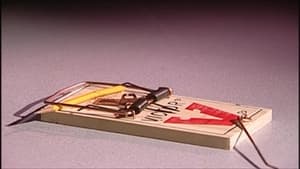
S14 Ep30
7.3
27th Aug 2007
They're designed to capture and often kill, but they don't always harm their prey. Traps are devices as old as humanity itself. We'll trap 400 pounds Black Bears with West Virginia Division of Natural Resources biologists.
S14 Ep16
7.3
16th May 2007
A look at the technology behind some of the 1960s greatest inventions. With color television, transistor radios, satellite broadcasting, touch-tone phones, lava lamps, the Ford Mustang, and toys like Etch-a-Sketch and the Super Ball.
S14 Ep12
7.3
12th Apr 2007
The technology used to keep your lawn green including the lawnmower, riding movers, sod, astro turf, and sprinklers. The state of the art grass used in the University of Phoenix Stadium in Arizona. Also: how a company moves big trees, and the science of different types of grasses.
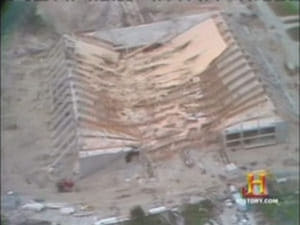
S11 Ep50
7.3
12th Oct 2004
What happens when the calculations of builders and engineers prove wrong and their constructs come tumbling down? In this episode, we examine the 1987 failure of the Schoharie Creek Bridge in New York; the partial destruction by a runaway freighter of the Riverwalk Marketplace in New Orleans in 1996; the roof collapse of the Rosemont Horizon Arena in Illinois in 1979; the deadliest grain-dust explosion on record in Westwego, Louisiana, when a grain elevator exploded in 1977; and the crash of the British R101 airship in the 1920s.
S11 Ep40
7.3
15th Sep 2004
The St. Lawrence Seaway is a monumental stairway in water, lifting massive ships hundreds of feet over thousands of miles. It’s the world’s longest inland waterway, a system of rivers, lakes, canals, dams, and locks that stretches 2,400 miles. And it’s one of the greatest engineering triumphs of the 20th century, pulled off against the violence of raging water and extreme winter. An essential part of the commercial infrastructure of the US and Canada, this complex system provides direct access from the Atlantic to North America’s heartland, enabling ships packed with trade to stop at any one its 65 ports–from Montreal to Duluth. From the 16th century, when French explorer Jacques Cartier searched for the legendary Northwest Passage, to the modern Seaway, built in the 1950s, we highlight the incredible engineering feats that went into creating the waterway.
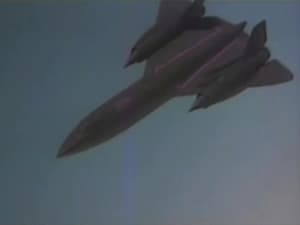
S11 Ep32
7.3
25th Aug 2004
Join us for a supersonic look at some of the most cutting-edge aircraft ever developed–from the X-1 that first broke the sound barrier to the X-43 Scramjet that recently flew at Mach 7. These extreme aircraft have made their mark on aeronautical history, and sometimes on political history as well. The U-2 and SR-71 spy planes played a crucial role in the Cold War, and now Lockheed Martin's top-secret "Skunkworks" division is touting the new "air dominance" fighter plane– the F/A-22 Raptor.
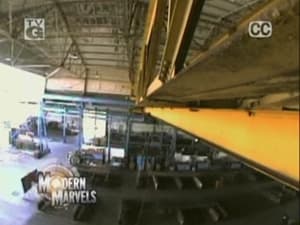
S9 Ep46
7.3
8th Oct 2002
One of the most useful machines ever created, the crane is a simple but important combination of the pulley and the lever. Though cranes have been helping us build civilization from at least the time of the Egyptian pyramids, the modern steel-framed construction cranes are a relatively recent development. Put on your work boots as we ride through the history of cranes from ancient days to skyscraper construction sites, ocean-freighter docks, and the International Space Station.
S9 Ep41
7.3
10th Sep 2002
Between 1941 and 1945, U.S. shipyards built more shipping tonnage than had been previously produced in the history of the world. American industrialists like Henry Kaiser transformed the nation’s shipyards into mass production facilities in a matter of months. Ships that had once taken years to build now only took weeks to construct. This record pace of producing ships is one of the most remarkable stories in the history of American industry. This episode utilizes rare color film obtained from the National Archives as well as principle photography taken on board World War II Liberty Ships and aircraft carriers that remain afloat today.
S9 Ep30
7.3
16th Jul 2002
Though they duplicate the real world for fun and fantasy, models are not always toys and they’re not always tiny. We explore the magic of these fascinating replicas–from the Rover and Lander models for the Mars Exploration Project to ancient Egyptian ship models found in tombs to English ship models from the Age of Sail. We also look at the rage for hobby modeling, with Lionel trains leading the pack, watch models go to war with scale warplanes in WWII, and invade science fiction films.
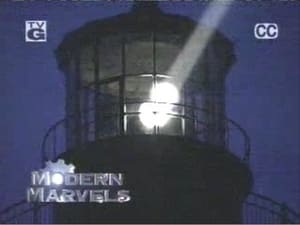
S8 Ep11
7.3
11th Apr 2001
From the earliest known lighthouses, such as the Pharos of Alexandria, one of the Seven Wonders of the Ancient World, to modern-day automated buoys and solar-powered lantern rooms, this history of lighthouses is rich with personal stories of lighthouse keepers, daring construction efforts, and ingenious optical discoveries. Today, as lighthouses are usurped by more efficient aids to navigation, these elegant structures are being converted to bed-and-breakfast inns and environmental retreats.

S7 Ep37
7.3
14th Nov 2000
Join us as we take a peek at the plumbing hiding behind your walls and snaking under the floors of your house. We’ll also meet the plumbing students who undergo rigorous training programs in specialized classrooms designed to give them hands on installation experience. We’ll also check out the latest in plumbing technology from waterfall showers to water conserving toilets. This episode of Modern Marvels will examine the past, present and future of the arteries of our civilization; plumbing.
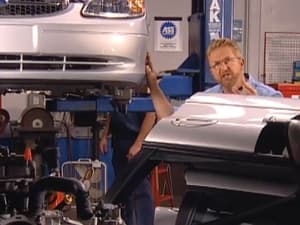
S7 Ep26
7.3
17th Sep 2000
Host Ron Hazelton and two mechanics dissect a 2000 Ford Taurus to trace the evolution of the automobile’s major systems. This 2-hour nuts-and-bolt special breaks the car down into its major components (engine, body, chassis, etc.). Starting with the earliest vehicles in the 1800s, automotive historians and experts describe how cars have evolved and explain major advances. And, finally concept cars and computer animations provide a glimpse into the future.

S6 Ep17
7.3
8th Feb 1999
Through rain, snow, heat, or gloom of night, we expect postmen to deliver the mail. The U.S. Post Office handles over 603-million pieces of mail daily. Yet it represents only 43% of the world’s total mail volume. From ancient Sumerians to Pony Express, from airmail to E-mail, we follow the long journey of mail.
S6 Ep1
7.3
27th Jul 1998
While a civilization’s greatness is reflected in the achievements of architects and engineers, equally impressive are spectacular acts of destruction throughout history. The cycle of construction and destruction reflects the shifting values of any given era. We’ll trace the evolution of planned destruction from ancient to modern-day.
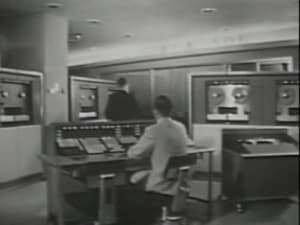
S4 Ep5
7.3
24th Nov 1996
A look at the inventions that have revolutionized society as we know it. They began as behemoths which weighed over 2 tons!
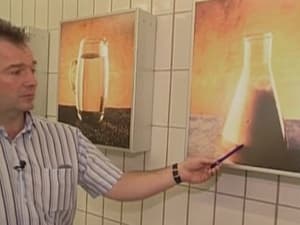
S9 Ep1
7.3
2nd Jan 2002
From Pilgrim brew masters to early commercial ventures to today's monolithic corporations, we'll imbibe American beer's long history, focusing on the commercial brewing industry that developed in the 19th century and continues to today. We'll also taste social experiments from the past, like the Temperance Movement and Prohibition, to see how they left scars on the industry and continue to influence sobriety today.

S5 Ep1
7.3
17th Aug 1997
When “poliomyelitis” swept the nation, thousands died or were disabled before American ingenuity, trial and error, and blatant acts of desperation led to one of the greatest scientific breakthroughs in history. We’ll see how polio shaped the vision of FDR, and catapulted the young unknown doctor Jonas Salk to international celebrity.
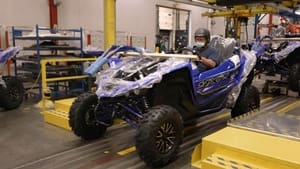
S21 Ep1
7.3
25th Jul 2021
Adrenaline runs high when Adam Richman visits the factory where Yamaha makes ATVs, Waverunners and more. Then, we get an inside look at a company built to get people sky-high in paramotors, as well as amusement park Diggerland USA, a place you have to see to believe. Can mech-suits become the sport of the future? Plus, learn all about a personal submarine built for under-sea sightseeing for two.
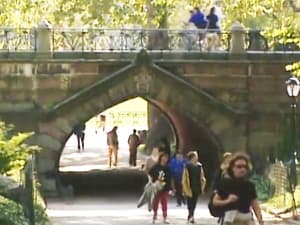
S6 Ep22
7.3
26th Apr 1999
Even in ancient times, city dwellers needed a scenic break from the urban landscape. But parks play a more important role than mere relief from tension–they also keep temperatures down and supply much-needed oxygen in congested cities. Come along for a stroll through New York City’s Central Park and L.A.’s Griffith Park.
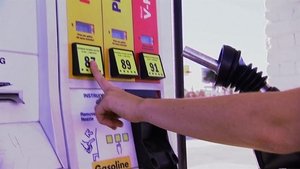
S15 Ep25
7.3
31st Jul 2008
Rubber, plastic, nylon, aerosols, resins, solvents, & lubricants; none can exist without oil. If we stopped driving our cars tomorrow, America would still need 5 million barrels of oil a day.
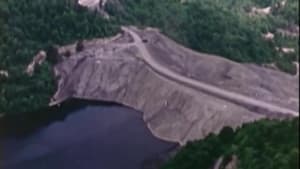
S14 Ep19
7.3
30th May 2007
To err is human, but when the error results in the loss of life, it's a disaster. Learn about the sinking of the Edmund Fitzgerald, the Buffalo Creek Dam disaster, and the explosion of a tanker in Los Angeles harbor.

S14 Ep3
7.3
31st Jan 2007
It's the unsung essential of modern life. Canning is the method of a preserving and packaging food, without which civilization would never have ventured beyond the local food supply. It changed the way the world eats and revolutionized the food industry.
S13 Ep24
7.3
26th Jul 2006
Where do machines go when they die? From B-52 Bombers to massive aircraft carriers, from passenger cars to Cold War cruise missiles and remnants of the Twin Towers, all that we manufacture has a lifespan. But reaching the end of their original purposes can be just the beginning.
S12 Ep29
7.3
15th Jun 2005
In a battle against the ferocious Atlantic or safe passage through waters where ships wrecked and lives were lost, it was an engineering feat that many believed impossible. This is the story of the Cape Cod Canal and the men who braved the natural elements and the Great Depression by venturing into new engineering territory. In 1909 excavation began on what would become one of the greatest success stories of our time. The evolution of the Cape Cod Canal into what it is today–a major commerce and recreational route of the Intracoastal Waterway–is a tale of determination, ingenuity, and the American spirit. Through historical photographs and expert interviews, the Canal’s story unfolds, and while traveling along on an Army Corps of Engineers Patrol Boat and Coast Guard vessel we see firsthand what happens on the Canal on a daily basis. And we meet the people who make the Canal and its bridges functional and safe, keeping the legacy of the early engineers alive.
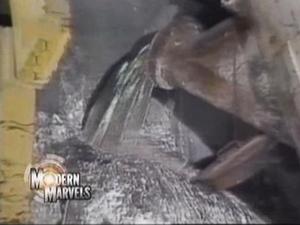
S10 Ep50
7.3
19th Aug 2003
They constitute the very essence of the modern world; the cadence of our progress sounds in the measured ring of the blacksmith’s hammer. From soaring skyscrapers and sturdy bridges to jet planes and rockets, metals play a key role. Our journey begins before the Bronze Age and takes us into the shiny future when new metal structures–engineered at a molecular level to be stronger, lighter, and cheaper–shape human progress, as they have since man first thrust copper into a fire and forged a tool.
S8 Ep14
7.3
14th May 2001
This episode of Modern Marvels examines the history and technology of chemical and biological warfare, which can be traced back at least four-thousand years, to the wars of ancient India, when soldiers used toxic fumes against their enemies.
S8 Ep2
7.3
16th Jan 2001
Where can you fire a missile without scaring the neighbors? Or lift millions of pounds in pursuit of a couple of ounces of gold? On a proving ground, of course, where performance is the only thing that matters. Because in the heat of battle or head-to-head competition, no excuses can be given. We’ll visit the US military’s Cold Regions Testing Center in Alaska and desert proving grounds in Arizona, the Olympic Complex in Colorado, and the now-defunct Packard proving grounds in Michigan.
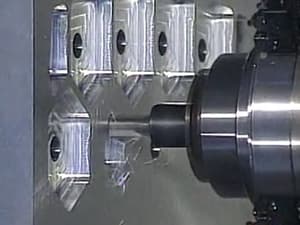
S7 Ep27
7.3
9th Oct 2000
No one wants a hand-made car or gun or an airplane. We want things made by machines. Machine tools are power–driven machines–of all shapes and sizes-used to make metal parts. Machine tools built our modern world. Our life would not be possible without them. This show will take a look at these amazing machines in action. Beginning with the story of the steam engine and traveling to modern day “machining centers”–used to make incredibly complex space shuttle parts–we’ll look at the basic types of machine tools and their development. We’ll also look at some of the most modern machine tools of the future, including machines that are changing the way products of tomorrow are made.

S7 Ep23
7.3
22nd Aug 2000
When completed, China’s Three Gorges Dam will tower 607 feet in the air and weigh 40 Great Pyramids. Other than China’s Great Wall, it will be the only man-made object visible from the moon. Supporters see it as key to a new China, controlling floods and bringing hydroelectric power to one of its least-developed areas. Critics voice a litany of concerns–from environmental to flooding the spectacular area for which it’s named. We trace its story–from ancient flood control to current controversy.
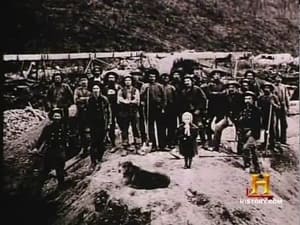
S7 Ep18
7.3
22nd Jun 2000
Around the world and across the eons, gold stands as a symbol of power, wealth, and love. The quest for the yellow metal took men across oceans, into the depths of the Alaskan winter, and miles beneath South African earth. This is the story of the hunters of the precious metal and their methods for extracting it.

S4 Ep4
7.3
20th Oct 1996
An exploration of the world’s most popular entertainment, from the boy genius who invented it to the RCA “General” who made it a reality.
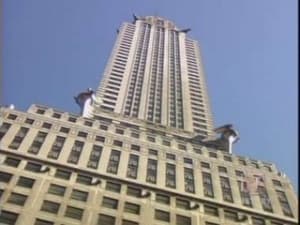
S1 Ep2
7.3
21st Jan 1994
The remarkable story of how the landmark New York City skyscraper was constructed during the depths of the Depression. Requiring 10 million bricks and 60,000 tons of steel beams and using a revolutionary technique to hold the steel girders in place–hot rivets–the world’s tallest building was completed four months ahead of schedule.

S22 Ep1
7.3
28th Nov 2021
Adam's not playing around, he's working hard to find out how some toys transform into valuable collectibles and become iconic classics. Adam gets VIP access to see how Play-Doh is created, and how every can gets that amazing smell. Plus, he visits the mecca of pinball manufacturing to see how their pinball machines have outlasted the competition and even the law! Then, how have Slinkys kept springing back? And, an inside look at how Lionel trains keep chugging.
S11 Ep36
7.3
6th Sep 2004
For two years, we’ve followed construction of the new California Department of Transportation headquarters in downtown LA–a massive 700,000 square-foot office building–and we use this building as a specific example to illustrate construction problems of mega-skyscrapers, from the Empire State Building to the Sears Tower to the TAIPEI 101. In hour two, the steel skeleton is up, but before the windows and walls go up, the general contractor tests the exterior wall system by building a mockup.
S11 Ep30
7.3
11th Aug 2004
The biggest moving objects ever built by man, oil tankers dominate the world’s waterways, both in size and numbers. Upwards of 10,000 strong, the world tanker fleet’s vast number results from the modern, insatiable thirst for oil. We’ll dig into the history of oil transport–from Civil War days to the critical WWII years and invention of the supertanker in the 1950s. And we examine the financial impact of modifying these steel leviathans to prevent future catastrophic environmental disasters.
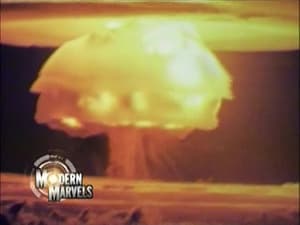
S11 Ep20
7.3
3rd Jun 2004
Modern Marvels shines the spotlight on the array of inventions that made the epic invasion possible, telling the stories of their development and following them into combat in the greatest invasion in history. From parachuting mannequins to pole charges, amphibious DUWKS trucks to Rhino Barges, D-Day tech is a fascinating look at the hardware that helped free Europe from Hitler's grasp.
S11 Ep16
7.3
30th Apr 2004
One aircraft in the U.S. arsenal best typifies the will to win. Using the latest and most sophisticated computerized technology, the F-18 Hornet is now one of the foremost fighters of the 21st Century. Once a plane that nobody wanted, today it’s the principal Navy and Marine fighter-attacker–with a flick of a switch, it transforms from bomber to fighter. Interviews with pilots and crews, combined with archive film and color reenactments, take you inside the cockpit of this multi-role aircraft.

S11 Ep14
7.3
21st Apr 2004
From tub to toilet to toothpaste, here's everything you ever wanted to know about the most used and least discussed room in the house. From the first home bathrooms in ancient India, Roman latrines, and bizarre Victorian-era bath contraptions, to modern luxurious master bathroom suites, we trace the history of bathing, showering, and oral hygiene. And we reveal the messy truth about what was used before toilet paper–brainchild of the Scott Brothers of Philadelphia–and why astronauts wear diapers.
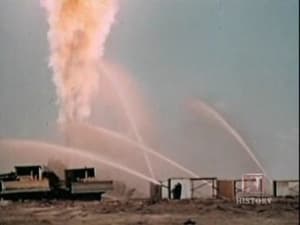
S11 Ep8
7.3
3rd Mar 2004
When a burning gusher shoots flames into the air, only a handful of men know how to snuff out the monster. Fighting fire with fire, they place explosives around the flames to blow it out, or douse it with tons of water. The modern world depends on these risk takers, yet their industry began less than 100 years ago. Join us for a scorching hour as we review the rich history of this “breed apart”, and look at modern heat-resistant clothing, new technology, and regulations that protect oil firefighters.

S10 Ep68
7.3
4th Nov 2003
Based on the popular book, this episode explores historical building collapses–from ancient pyramids to the Cathedral at Beauvais to Kansas City’s Hyatt Regency–and demonstrates that clear warning signs often existed, but were ignored. We also examine the collapse of the Twin Towers in New York. Author Jim Chiles believes that designers and engineers must better prepare for all potential disasters–by understanding existing risks, they can prepare for the unknown, like terrorism.
S10 Ep58
7.3
26th Sep 2003
The story of the birth and development of rapid fire weapons from the 14th century until the end of WWI–where on one terrible day the machine gun was responsible for mowing down nearly 60,000 men

S10 Ep54
7.3
8th Sep 2003
Witness the construction of a terrorist-proof safe room. Discover how your windows might someday act as biological weapons detectors. Learn how scientists are protecting the food you eat and water you drink. In the biggest technological push since the space race, inventors are creating cutting-edge devices, gadgets, and gizmos to keep you and your family–and even your pets–safe. Find out what technology can do to protect you, and how you can use technology to protect yourself.
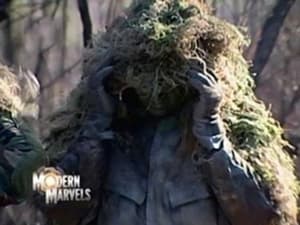
S9 Ep29
7.3
15th Jul 2002
From ancient hunters’ camouflage to computer-generated digital pattern uniforms, we uncover the past, present, and future of deception through disguise. During an ambush exercise by US Marines, we learn that camouflage came from natural coloration and patterns of flora and fauna. The art of military camouflage took off in WWI with the use of the airplane, when the French learnt to hide from “eyes in the sky”. It’s a world of shadows and smoke, where even cities disappear through disguise.
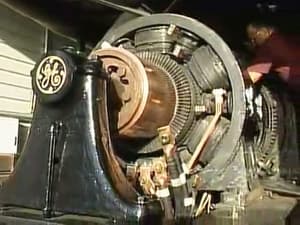
S9 Ep15
7.3
16th Apr 2002
October 7, 2001: Missiles from lethal U.S. jets rain down onto Afghanistan. One powerful and deadly plane led the majority of the assaults–the F-14 Tomcat, the world’s most complete military fighter. No other fighter jet carries the F-14′s unique combination of weapons. Its state-of-the-art system can spot an oncoming enemy plane at almost 200 miles. Its radar can detect targets as low as 50 feet and as high as 80,000 feet and does so three times faster than the radar of any other fighter jet.
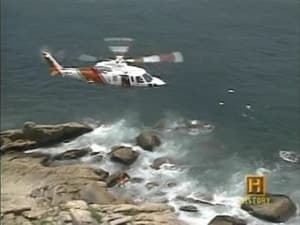
S9 Ep6
7.3
31st Jan 2002
From the early “egg beaters” of World War II to the “flying tanks” of Operation Desert Storm, we’ll fly aboard one of the most agile and potent weapons on the battlefield–the helicopter. Meet the first pilot to fly a combat rescue mission in WWII and a U.S.A.F. female aviator; and view classified footage of the Apache in Iraq.
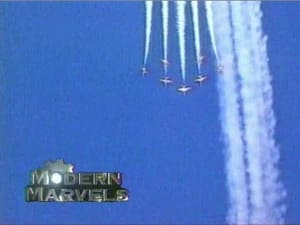
S8 Ep26
7.3
4th Sep 2001
From barnstormers to Blue Angels, antique aircraft to supersonic jets, each year there are an astonishing 425 air shows in America alone, entertaining over 18-million spectators. From futuristic festivals to billion-dollar expos, we explore the world of amazing aerobatics and their ever-evolving aircraft and see how aviation technology has affected air shows–and how air shows have advanced aviation. Find out why these high-flying events are second only to baseball as America’s favorite family event.
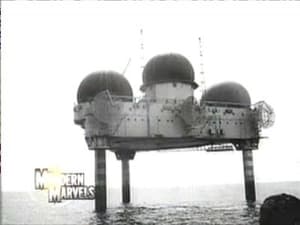
S8 Ep13
7.3
7th May 2001
When design flaws fell projects, the cost is often exacted in lives as we see in this look at engineering disasters. Why did the Tower of Pisa begin to lean by as much as 17 feet; what caused the first nuclear accident in 1961 in Idaho; what killed three Soyuz 11 cosmonauts aboard the world's first orbiting space station; how did a winter storm destroy the Air Force's Texas Tower Radar Station, killing 28; and what errors led to NASA's loss of the Mars Climate Orbiter and the Mars Polar Lander?
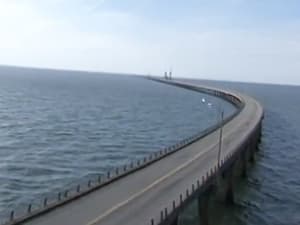
S8 Ep6
7.3
12th Feb 2001
Named one of the seven engineering wonders of the modern age, the Chesapeake Bay Bridge and Tunnel connects Virginia proper with its easternmost landmass. Stretching 17 miles across the historic Chesapeake Bay, the structure represents a man-made boundary between the Bay and the Atlantic. The structure includes two 2-lane highways supported mostly by trestles, four man-made and one natural island, two truss bridges, and two revolutionary sunken tube tunnels.
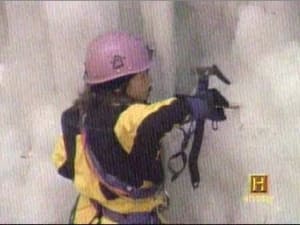
S8 Ep5
7.3
7th Feb 2001
In an historic survey of man’s adaptation to killer environmental conditions, we travel to the desert, the Arctic, the sea, jungle, and space, charting the body’s physiological responses to extreme circumstances such as frostbite, heatstroke, and hypothermia. We talk with military survival experts and learn about the latest cutting-edge survival gear, as well as the equipment aboard the space station, and look to the future, when nano-technology will create a new type of technology.
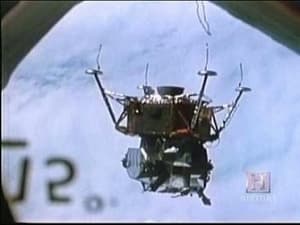
S8 Ep4
7.3
29th Jan 2001
The Apollo 13 mission was intended to be a “routine” trip to the moon. But when an oxygen tank exploded, the spacecraft was crippled and its 3-man crew placed in mortal danger. The Lunar Module, intended for deployment on the moon’s surface, instead became a lifeboat. Scientists and engineers on earth fought a race against time to save the crew. We’ll examine the mission, which nearly ended in tragedy, but instead was a resounding success, and in some ways became NASA’s finest hour.
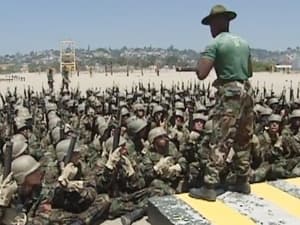
S7 Ep32
7.3
19th Oct 2000
Sign up at the ultimate survival school, where soldiers learn to kill or be killed, and learn how 21st-century warriors are training today for the battlefields of tomorrow. We follow combat training throughout history, reviewing survival skills and psychological tools–from ancient Rome to World Wars One and Two–and learn how modern training is enhanced by advanced technology and computer simulation
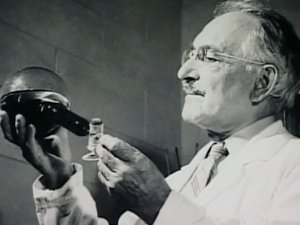
S6 Ep8
7.3
3rd Nov 1998
In 1941, penicillin was first used to save human life. But now, bacteria has emerged resistant to every known antibiotic, and scientists have begun to fear that the era of the wonder drugs is near to its end.
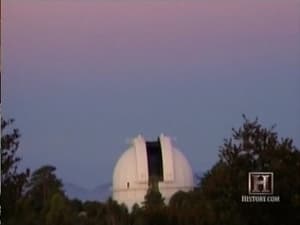
S4 Ep10
7.3
8th Jun 1997
From Stonehenge to the Hubble Telescope, man has always been a species of stargazers. Unforgettable film footage and expert accounts reveal the facts of astronomy’s most mind-boggling discoveries.
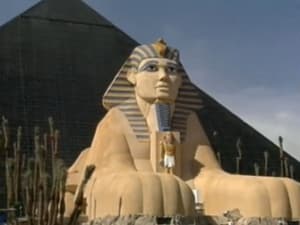
S4 Ep8
7.3
23rd Mar 1997
Standing majestically for centuries, the world’s great pyramids have long inspired and mystified scholars. Leading experts and historians explore the engineering genius that created some of the largest structures on the planet. From ancient Egypt to Central America, we visit these technological masterpieces.
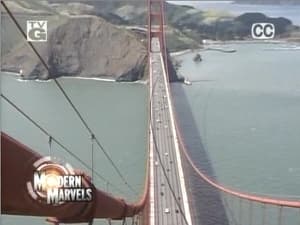
S2 Ep7
7.3
21st May 1995
More than 50 years after its construction, the Golden Gate remains one of the world’s greatest engineering marvels. It took 25-million man-hours and 80,000 miles of cable to complete. But the cost in human life proved even greater.
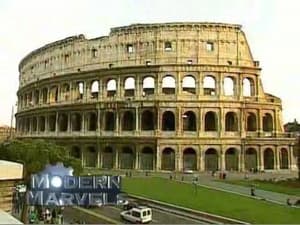
S8 Ep18
7.2
19th Jun 2001
Modern Marvels brings the heart of the Roman Empire back to life through the rich history of this famous amphitheater. Built in 70 AD, the Roman Colosseum seated 80,000 people, boasted a retractable roof, underground staging devices, marble seating, and lavish decorations. To this day, it serves as the prototype for the modern stadium. The complexity of its construction, the beauty of its architecture, and the functionality of its original design made the Colosseum the perfect place for massive crowds to congregate for the bloody spectacles it was built to contain.
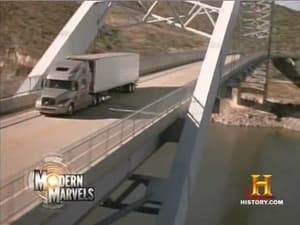
S7 Ep21
7.2
3rd Aug 2000
Icons of the open road, trucks form the backbone of the construction and transportation industries. The facility to handle nearly any load and the ability to deliver goods almost anywhere make trucks integral to modern life. From 18th-century steam-powered carriages to tomorrow’s computerized trucks, it’s a long haul you’ll enjoy!

S18 Ep2
7.2
10th Oct 2011
We live in a highly mechanized world in which billions of products are made by machines–but there are some things that can be built only by using an even more sophisticated tool–the human hand. In New Mexico, a pilot who builds his own jet-powered glider takes to the skies–his very life depending on his handiwork. Canoe makers in Montana, and a knife maker in Washington, handcraft items so unique that customers are willing to pay significantly higher prices than if they were machine made. In the farmlands of Central California, craftsmen keep alive the ancient art of weapon making–see their gleaming suits of armor in action, as weekend warriors do battle. Ever wonder how those impressive animal skeletons in museums are constructed? The artists of Skulls International in Oklahoma City share their secrets. And in Hollywood, the Chiodo brothers reveal how handmade special effects have a charm and character that today's computer animators can't duplicate.
S12 Ep55
7.2
5th Oct 2005
Need a car part or an accessory to give it personality? Since 1903, when Sears dedicated a portion of its catalog, the automotive after-market grew into a billion-dollar juggernaut. We visit Auto Zone, the retail leader, whose largest store carries 25,000 parts. At SO-CAL Speed Shop, a sedan is transformed into a hot rod. Achieving $100-billion in annual sales didn’t happen overnight, but largely on the shoulders of three entrepreneurs–cartoon characters Manny, Moe, and Jack, who were real people. In 1921, they opened their first store in Philadelphia–Pep Auto Supplies. By developing brand names, carrying key parts, and providing hands-on service, they set the standard. Finally, we look at odd products sold by auto stores, discover how Armor All transforms dull interiors into brand-new, and how a tire sealant named Slime may replace the spare tire.
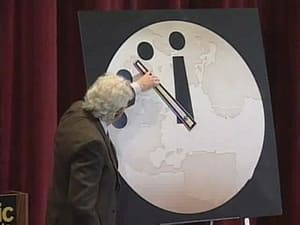
S12 Ep18
7.2
7th Apr 2005
Developed in 1947 as an image to symbolize urgency in the Cold War and the threat of nuclear disaster, the mission of the Doomsday Clock has expanded to include non-nuclear global security issues. Maintained by the Board of Directors of the Bulletin of the Atomic Scientists, it’s based at the University of Chicago. In response to world events, they move the clock’s minute hand closer to or away from midnight–doomsday. In this hour, we cover the clock’s history, its effectiveness, and its critics.
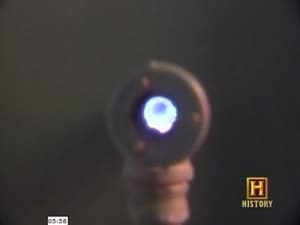
S9 Ep21
7.2
4th Jun 2002
Who could imagine life without our "man-made weather"? On cold winter nights and hot summer days, we are forever grateful to the visionaries who took two basic elements–fire and ice–and turned them into true modern marvels. Fire warmed the caves and primitive dwellings of mankind for centuries, yet the technology of keeping cool lagged far behind as we learn in this chronicle of heating and air conditioning that covers advancements from the home and industry to outer space and beyond!
S8 Ep37
7.2
29th Nov 2001
Unruly and eclectic, Los Angeles is home to an array of engineering and construction marvels that rivals any city in the world. No single word can sum up the L.A. experience, but the five marvels we profile give a sense of the breadth and scope of the city’s achievements: the new Red Line Subway system that barrels through a mountain range; the freeway system; Los Angeles Colisseum, built in 1923; the billion-dollar Getty Center that houses the family’s artwork; and Disneyland, the first theme park.
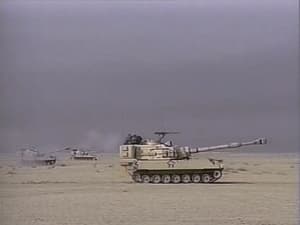
S8 Ep24
7.2
21st Aug 2001
Cannons have fired balls of iron and atomic bombs, changed the way wars are fought, and now come equipped with smart weapons. Beginning with 13th-century cannons that were designed to penetrate forts of the day, we'll see how cannons were first cast and later forged, and show how large cannons terrorized civilians and soldiers in WWI and WWII. Moving to the present, we feature the 40-ton self-propelled Crusader that launches 100-pound steel artillery shells more than 33 miles.
S7 Ep38
7.2
5th Dec 2000
Fortification evolved as man tried to defend his territory from attack. From fenced-in hills to walled cities to impenetrable forts, strongholds of the past echo the history of battles for territorial control. In a 2-hour special, we examine various historical defenses, including France’s Maginot Line, a defensive string of forts with enfilading firepower; the Atlantic Wall, 3,000 miles of shore fortifications built by Germany in WWII; and the North American Aerospace Defense Command (NORAD).
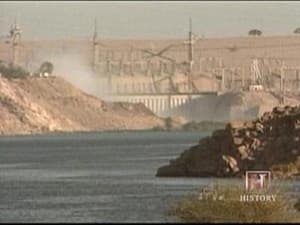
S7 Ep22
7.2
14th Aug 2000
In 1954, Gamal Abdel Nasser, the Arab Republic of Egypt’s first prime minister, had a plan to bring his poor country into the 20th century. To pull it off, he needed to harness the flow of the world’s longest river–the Nile. The ambitious plan called for construction of a high dam in southern Egypt at Aswan. But the builders of the pyramids and the Suez Canal were no strangers to large undertakings. We’ll see how the Aswan High Dam socially, politically, culturally, and agriculturally affected Egypt.
S7 Ep17
7.2
19th Jun 2000
The most opulent are wheeled luxury liners with satellite TV and hot tubs–a far cry from the first bus, an 8-passenger carriage! Watch a bus being built from the ground up, and learn the differences in the standard types (transit, school, inter-city, and specialty). Pack your bags or lunch and travel down the road of bus history.

S7 Ep6
7.2
29th Feb 2000
From amazing ancient Roman aqueducts and arch bridges, romantic Renaissance spans, 19th-century railroad crossovers, to monumental marvels of our time, bridges played a key role in the human quest to connect and unify. We'll trace the history of bridge types, including suspension, arch, beam, truss, and cantilever designs.

S6 Ep38
7.2
12th Oct 1999
The history of civilization could easily be measured in terms of our ability to make, use, and improve tools–an activity that is at least 4 million years old! At the tip of our toolmaking timeline are power tools. We’ll examine today’s power tool industry, which is booming thanks to more powerful, lighter, and quieter cordless tools.
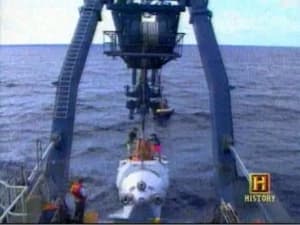
S5 Ep15
7.2
4th Nov 1997
From hollow-reed snorkels to mini-submarines equipped with video cameras, curiosity compelled inventors to conceive of innovative devices to dive ever deeper into earth’s last frontier. Explore the ocean floor using the latest in technology, and examine biological and geological discoveries culled from the sea’s depths.
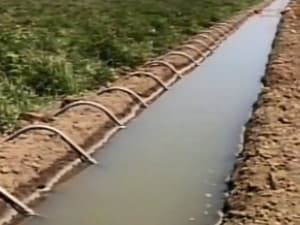
S4 Ep3
7.2
6th Oct 1996
Many rivers quenched the thirst of millions in the American west and around the world. Without these aqueducts, some of the earth’s largest cities would turn into gigantic ghost towns. Their technology has been in use for over two thousand years. But today these engineering marvels cost billions of dollars to build, requiring thousands of men to toil for years on end. Aqueducts have made some men famous and others fabulously wealthy. In Los Angeles one man’s vision took one hundred thousand men to complete and a great city was truly born. In Northern California the most famous conservationist of our time waged the political fight of his life in an attempt to save one of nature’s most spectacular valleys from San Francisco’s demand for more water.

S22 Ep2
7.2
5th Dec 2021
Adam Richman visits the legendary factory where one of the most popular board games of all time is made: Monopoly! Then he finds out how Masters of the Universe action figures are making a comeback in a big way. Plus, see how Mattel is using the latest technology to make new models of Hot Wheels come to life.
S16 Ep5
7.2
11th Feb 2010
From building cutting-edge competition venues to the latest sports science training, winter sports use more technology than ever. This episode takes you behind the scenes of the Vancouver 2010 Olympic Winter games. Olympic organizers race against the clock to build venues, expand transportation and security, and add futuristic touches to the ultimate Olympic icon–the Olympic torch. Meanwhile, US Olympic hopefuls use high-tech training tools to gain a competitive edge. Take in breathtaking views from the world's highest unsupported gondola and rocket down a bobsled track at 80 miles per hour, as we show you winter sports like you've never seen them before.

S1 Ep6
3.7
13th Mar 1994
The incredible tale of how Gutzon Borglum created the world's largest sculpture by carving the faces of four US presidents (George Washington, Thomas Jefferson, Theodore Roosevelt, and Abraham Lincoln) into the Black Hills of South Dakota. The four figures carved in stone pay tribute to the first 150 years of American history. The hour chronicles the "swiveled pointer" that Borglum put in each president's "head", and how workmen hung like spiders 6,000 feet above the ground to blast away 450,000 tons of rock.
S10 Ep7
4.0
4th Mar 2003
Rising almost 1,500 feet high, the Petronas Twin Towers in Malaysia were named the world’s tallest in 1996 by the Council on Tall Buildings. Connecticut architect Cesar Pelli blended traditional Islamic motifs with the modern skyscraper to create a beacon to the new Asia. Join us as we tour this gateway to the East, an engineering marvel involving experts from around the globe and the determination of Prime Minister Dr. Mahathir bin Mohamad to transform his country into a 21st-century power.
S3 Ep12
4.6
4th Nov 1995
Being starved by an OPEC embargo, America is desperate for oil, and in 1973 construction begins on a 800 mile pipeline, tapping into Alaskan oil to quench their insatiable oil hunger.
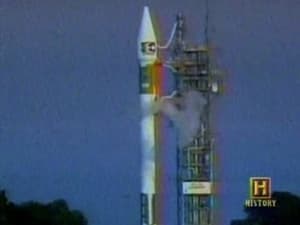
S10 Ep26
4.7
26th May 2003
The story of Russia’s “Crown Jewels”, the finest rocket engines in the world, built under conditions of absolute secrecy to land a man on the moon. Learn how, at the height of Cold War rivalry, the engineers of the Soviet Union’s elite Design Bureau developed what have become the most admired rocket engines money can buy, and how in the current climate, driven by commerce not conflict, those engines have found their way into American rockets.

S7 Ep36
4.8
8th Nov 2000
Arising from the horrible carnage, deprivation, and suffering caused by war is a countless array of everyday items–from hairbrushes to microwaves–that directly descend from wartime innovations. Wartime research and development have revolutionized communication, transportation, and medicine. From EM Spam /EM to nuclear power to hairspray and cell phones, life as we know it ironically owes a lot to war. We'll follow the day-to-day life of an ordinary woman and see the influence of war on her life.
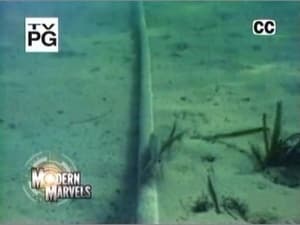
S1 Ep5
5.0
27th Mar 1994
Looks at how one man’s vision and the cooperation between the U.S. and England resulted in an instant, reliable transcontinental mode of communication in the mid-1800s. See how wealthy 33-year-old Cyrus West Field endured many failures and lost millions in his attempt to close the communication gap between the Old and New Worlds.
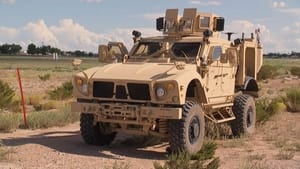
S23 Ep1
5.0
16th Feb 2022
Sit tight and belt in because while there are over 230 million licensed drivers in America; we are going way beyond the driver's seat of your average automobile. It's time to jump behind the wheel of some of the biggest, fastest, most powerful machines on the planet. From battle tanks to blimps, helicopters to harvesters, you'll get the chance to sit in the driver's seat of some the world's most incredible vehicles for some truly Wild Rides.
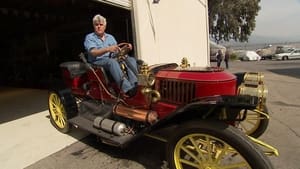
S23 Ep2
5.0
16th Feb 2022
Turn up the heat because it's time for Steam Power. From Jay Leno's personal steam cars and 11-ton steam engine to carousels, boats and skyscrapers fueled entirely by steam, Modern Marvels takes a deep dive into one of the oldest means of locomotion. It's high tech - 1800s style - as we travel the country in search of the most incredible vehicles, engines and even robots that run on Steam Power.
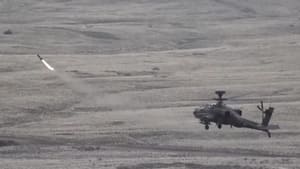
S23 Ep3
5.0
23rd Feb 2022
Ready to take a ride on the most thrilling helicopters in the sky? From the military's deadliest and most sophisticated choppers to homemade helicopters and million-dollar models customized with everything from bars and entertainment systems - Modern Marvels explores some of the coolest copters to ever take flight.
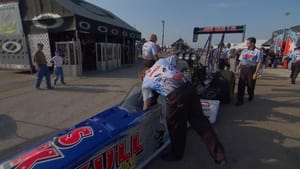
S23 Ep4
5.0
23rd Feb 2022
Buckle up as we take a rip-roaring ride through the world of extreme horsepower! From 8000 horsepower dragsters and hydroplanes with top speeds of 200 miles per hour, to a cargo ship propelled by the most powerful diesel engine on earth - a whopping 95,000 horsepower - Modern Marvels muscles through the most impressive engines ever built and how they achieve their incredible performance.
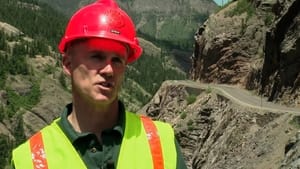
S23 Ep5
5.0
11th Jul 2022
Better buckle up because one of these dangerous drives could be your last! From Bolivia's "Death Road," to California's fog-smothered Highway 99, to dodging IED's on the road to Baghdad Airport, Modern Marvels puts you in the driver's seat to experience the harrowing journey down some of the world's scariest roads.

S23 Ep6
5.0
11th Jul 2022
Better roll up your windows and put it in neutral as we join the 2 million people who wash their car every single day! From one of the largest car washes in the U.S. to cleaning radioactive waste off a train to tips on getting tar, glue, egg and sludge off your priceless Porsche, Modern Marvels takes a look at all the awesome technology we use to keep our beloved vehicles sparkling clean.
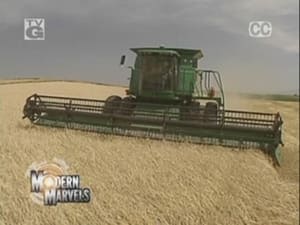
S7 Ep28
5.3
15th Oct 2000
The US agricultural process, from seed to shelf, is so efficient that most people don’t think much about it. But food growing and processing is ever more sophisticated, employing computer-guided, ground-shaking machinery, and sometimes controversial techniques. It’s an industry of declining family farms, diminishing returns, yet higher yields. We review the evolution of the tools used to produce food, show the steps in the cycle that bring food to the table, and look at the future of farming.
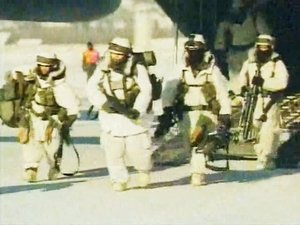
S10 Ep4
5.4
31st Jan 2003
Traces the story of the U.S. Army’s legendary 10th Mountain Division. They were formed after WWII began, specifically to fight in high, rugged mountain conditions. After training in the Colorado Rockies, they were sent to Italy’s Apennines to take on well-entrenched Germans. Using a combination of mountain skills and raw courage, they drove the Germans back, and helped win the war in Italy. Later, former members of the 10th helped create many of the country’s ski resorts, including Aspen and Vail.

S12 Ep50
5.4
14th Sep 2005
Traces the origins of this tasty drink from Ethiopia over 1,000 years ago to the espresso-fueled explosion of specialty coffee stores like Starbucks today. Along the way, we’ll see how American companies like Hills Brothers, Maxwell House, Folgers, and MJB grew to be giants. Discover how billions of coffee beans make their journey from coffee farms and plantations, and are processed in gigantic roasting and packaging plants before showing up in coffee cups all over the world. Details the invention and production of instant coffee, decaffeinated coffee, freeze-dried coffee, and the espresso machine. Also, we explain how coffee made shift work in factories possible, while coffeehouses provided a creative cauldron that brewed political and artistic progress in the 18th and 19th centuries. And, we also provide tips on how to make a better cup at home!

S13 Ep49
5.4
18th Oct 2006
Strength...a powerful word, but what does it mean? How is it measured? Why are some things simply stronger than others. How strong is a rope, a tractor, a diamond, a tugboat or even plastic. How and why strength matter to us every day.

S7 Ep35
5.5
6th Nov 2000
Mankind controls the environment in a variety of ways, whether by capturing the force of a river, harnessing the power in coal or oil, controlling a nuclear reaction, or transforming the light of the sun into electricity. From Thomas Edison and Nikola Tesla to Enrico Fermi and Albert Einstein, the world's greatest minds have enabled us to acquire our light, heat, and power with a simple flip of the switch. Join us for an electrifying hour as we review the foundation for all of this–power plants.
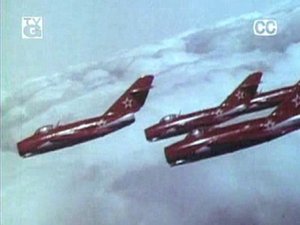
S10 Ep21
5.5
10th May 2003
After World War I, Russia began building its most prolific aircraft, the MiG line. MiG pilots fought with distinction in WWII, but the MiG heyday hit with the design of the MiG-15, a copy of a Nazi experimental jet. During the Korean War, MiG-15s dueled with U.S.A.F. F-86s over Korea. Later, the MiG-21 contested the skies over North Vietnam as they duked it out with American Air Force and Navy jets.
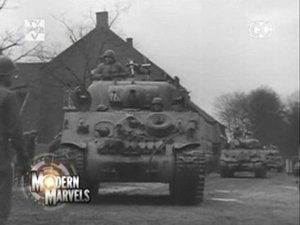
S10 Ep23
5.5
15th May 2003
During WWII, American tank crews duked it out with Nazi Panzers in a high-explosive duel to the death. The German tanks had thicker armor and better guns than the mainstay of the U.S. armored forces, the M-4 Sherman. For many crewmen, the Sherman lived up to its nickname as a steel coffin. But what the tanks lacked in firepower and protection, the crews made up for in guts and good old-fashioned Yankee ingenuity. We’ll meet some of these armored warriors from WWII.
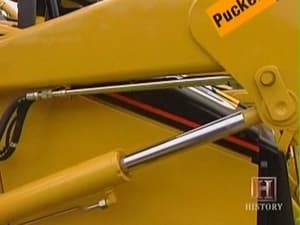
S11 Ep17
5.5
12th May 2004
The machines that helped build our world have been powered by hydraulics, a compact system of valves, hoses, and pumps that transmits forces from point to point through fluid. This basic concept of powerful force transmission through fluid provides the drive for most machines today. From the ancient Roman mastery of the aqueduct to Universal Studios, a veritable hydraulic theme park, we see how hydraulics power industry, keep planes flying, and make that 3-point-turn a U-turn.
S12 Ep28
5.5
8th Jun 2005
A steel giant standing 1,107 feet high on broad shoulders, this vertical city houses 1,200 people. Join us as we explore how a young architectural team from Skidmore, Owings & Merrill conceived of an innovative 100-story, multi-use tower. A construction crisis halted the project for six months, but once it resumed, it took just four years and 50 million man-hours to complete the John Hancock Center. In the heart of Chicago, the John Hancock Center rises 100 stories above the luxury shops and restaurants that line the famous Magnificent Mile. It opened on May 5, 1970 with 237,657 square feet of retailing, 812,160 square feet of offices, 703 rental apartments (converted to condominiums in 1974), 507-car parking garage, and an ice skating rink! There are 1,250 miles of wiring and 11,459 panes of glass. Nicknamed “Big John”, it cost $100-million and took 46,000 tons of steel to build.
S13 Ep48
5.5
11th Oct 2006
It's an art, it's a science and it's a marriage of vapor and water. From the elite to the illegal, the banned, to the celebrated, the distillation of spirits is a 50 billion dollar a year business. Visit brandy, liqueur, moonshine, and absinthe distilleries to see how this magic is done.

S10 Ep27
5.6
3rd Jun 2003
In a raging war for control of Earth, occupying forces buzz and skitter, with some out to draw blood! Termites, mosquitoes, rats, mice, ants, and cockroaches have spread damage, disease, and death for millions of years. As we trace pest control from humble ancient beginnings to medieval Black Plague, from billion-dollar pesticide business to holistic Integrated Pest Management, we meet the foot soldier in the battle between man and bug–today’s high-tech and ecologically aware exterminator
S18 Ep4
5.6
7th Nov 2011
Teddy Roosevelt carried a revolver. The night they each died, Abraham Lincoln carried a $5 Confederate note and nine newspaper clippings, while John Wilkes Booth carried a candle and pictures of five women, including his fianc e. Why? Most people don't even think about it anymore. We simply put what we were carrying yesterday, and the day before that, back into our pockets. Do we really need everything we carry with us? In this hour we will take a look at the items we found in peoples' pockets all across America. Not cell phones, which everybody has, but more intimate items. Personal things…both valuable and cheap. Work aids…both simple and high-tech. Even food! And we'll not only see what they must have in their possession, but how some of it is made. Why does a search and rescue fireman carry a hockey puck? We'll also discover how they make and carry a "personal escape" bailout system.
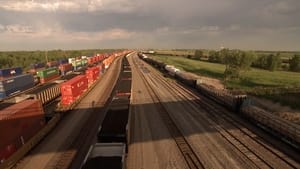
S23 Ep7
5.7
18th Jul 2022
Get ready to ride the rails as we take a trip along the greatest freight transportation system in the world! From the early iron horses to today's sleek steel stallions, Modern Marvels climbs aboard the complex rail network that snakes throughs valleys, over rivers and across prairies to get America's goods from the factory to your front door.
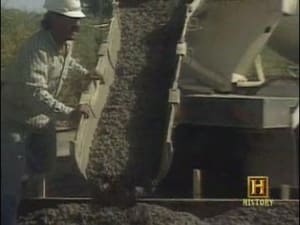
S7 Ep12
5.8
8th May 2000
Modern Marvels explores how the basic formula of cement, aggregate and water has changed the world. Concrete has enabled us to create everything from roads and runways to buildings and bridges. The program will explore the history as well as the future of this humble material?from the ancient Romans, who pioneered its use in their vast system of aqueducts, to modern engineers developing a bendable concrete more resistant to the destructive power of earthquakes.

S7 Ep19
5.8
27th Jul 2000
Backbones of worldwide economics, for centuries banks enabled the creation of wealth, and industry leaders became icons. But modern technology revolutionized the way banks do business, and the Internet insures they must adapt or disappear. From banking's early European origins to "e-banking", this is an hour you can't afford to miss!
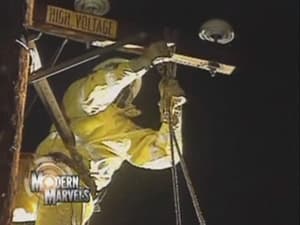
S10 Ep29
5.8
24th Jun 2003
Look closely at those tall metal towers that span the country and you might see tiny specks climbing up the soaring steel like spiders on an enormous web. Meet the courageous linemen who erect, string, and repair 250-foot high electrical transmission towers, working with energized power lines that can carry up to 765,000 volts!

S8 Ep3
5.8
22nd Jan 2001
Commercial Jets traces the evolution of commercial aviation from the stumbling beginnings of the De Havilland Comet to the wide-body rocket ships of today. This is the story of a high-tech worldwide competition among a field of high stakes players. Billion dollar deals ride on cutting-edge designs to carry more passengers father, faster and safer.
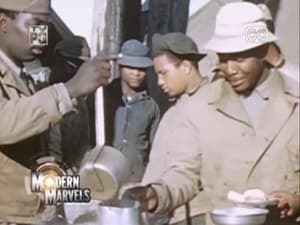
S10 Ep6
5.8
11th Feb 2003
Today, vacationers travel from British Columbia north through the Yukon Pass on their way to Fairbanks, Alaska, thanks to one 2-lane roadway, the 1,522-mile long Alaska Highway. A bit treacherous in spots and best driven in the few summer months the region provides, it's an unrivaled engineering feat that took 11,000 soldiers, nearly 4,000 of them black, only eight months to build! Travel back to 1942 as they bulldoze their way into history while connecting the Lower 48 to the Alaskan Territory.
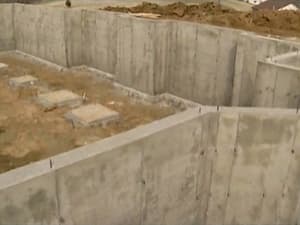
S12 Ep19
5.8
26th Apr 2005
Venture down that creaky staircase to explore the most misunderstood room in the house! From Pompeii to Pittsburgh, the dark, cool, and forlorn spaces beneath our living quarters have always contained things that helped us live comfortably. Ancient Hittites, Phrygians, and Persians carved subterranean rooms for food, water, and wine storage, and for shelter from weather and marauders. For ancient Greeks and Romans, a basement greatly increased a house’s value. Ruins of homes at Pompeii reveal the importance of basements in providing both heat and storage for rich Roman families. Renaissance architects placed kitchens, servant quarters, and laundry rooms there, hidden from the eyes of their aristocratic patrons! Colonial Americans expanded the practice, and by the 20th century, the basement was a routine feature. Come along as we demystify this domestic underworld, which turns out to be an area of innovation, imagination, and creativity.
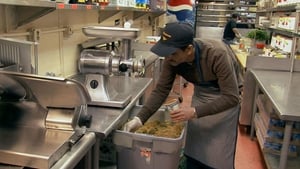
S16 Ep8
5.8
11th Mar 2010
What does it take to turn twenty tons of steel into top-notch vehicles in less than a day? How does a pile of lumber become a million dollar home in a mere week? Every process, from beginning to end, is a unique and incredible adventure. From the fiery birth of high tech golf clubs to the cataclysmic end of old buildings… get ready to race from Start to Finish.
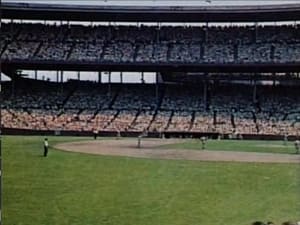
S6 Ep31
5.8
9th Aug 1999
Step up to the plate and play ball as we take you on a tour of those amazing edifices of the national pastime–baseball stadiums! From the sandlots and wooden ballparks of the 1800 and 1900s to the monolithic multipurpose stadiums of today, baseball parks have grown into technological wonders that pull in and cost millions.
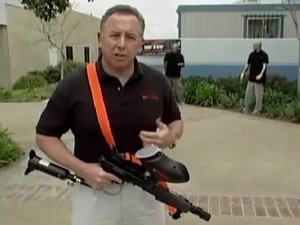
S10 Ep10
5.8
13th Mar 2003
They stun, debilitate, immobilize–providing police and peacekeepers with options other than shouting or shooting. From the ancient caltrop–a multi-pointed contraption hurled by foot soldiers into a horseman’s path–to sting-ball grenades, electrical shock devices, and sound, light, and energy weapons, we examine non-lethal weapons that disperse crowds and take down criminals. And in a whiff of the future, we see why the government thinks stink bombs might prove useful in the war against terror.

S13 Ep51
5.8
8th Nov 2006
Discovered around 18,000 years ago, tobacco was first cultivated in the Andes between 5000 and 3000 B.C. At a modern tobacco farm in North Carolina, a farmer will show how the crop is harvested and cured and visit the Fuente cigar plantation in the Dominican Republic. While tobacco has brought pleasure to countless smokers the world over--it has sent millions to an early grave. In an interview with the Surgeon General, explore this leading public health issue. The show will also look at smokeless methods of consumption as well as explore the use of nicotine replacement therapy.

S15 Ep7
5.8
17th Mar 2008
Visit some of the world's finest distilleries to see how each country brews this thousand-year old spirit. Go behind the scenes at Jim Beam, Jack Daniels and Canadian Club Whiskey.
S6 Ep4
5.9
28th Sep 1998
Public aquariums have undergone dramatic changes since inception in mid-19th century. A series of technological innovations has transformed them into virtual oceans with spectacular multi-million gallon displays. Examine the latest high-tech aquatic wonders and take a peek into their future.
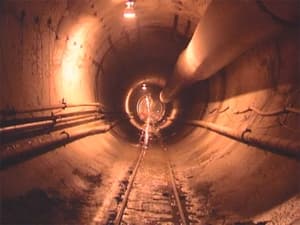
S3 Ep3
5.9
8th Oct 1995
There is no more potent demonstration of man’s resolve than the design and construction of tunnels–avenues that slice through a conspiracy of elements in the single-minded determination to connect two points. Whether underwater, blasted through solid rock, or negotiating the shifting strata of earth’s unstable crust, we explore the design and engineering of famous tunnels…and the motivation behind them.
S6 Ep35
6.0
13th Sep 1999
Tracks the technological innovations that made newspapers what they are today, while exploring the stories of the publishing tycoons who became some of the most powerful men of the 20th century. From the invention of the printing press in the 15th century to computerized newsrooms to the Internet, we examine the history of the news.
S7 Ep7
6.0
6th Mar 2000
“All hope abandon, ye who enter here!” This sentiment has permeated the masonry and clanging bars of prisons built throughout the ages. We’ll see how the philosophy and architecture of today’s American prisons emerged from the sewer cells and castles and dungeons of ancient Rome, medieval Europe, and 18th-century England.
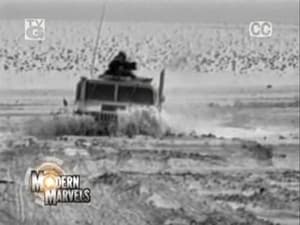
S9 Ep4
6.0
29th Jan 2002
The rousing story of the tank, from its primitive appearance in WWI to the high-tech world of modern tank warfare, with emphasis on the tank’s Golden Age during WWII. In the second hour, we’ll look at the American soldier’s best friend in WWII–the Jeep. A “Blitz Buggy” could serve as a combat car, snowplow, or ambulance!
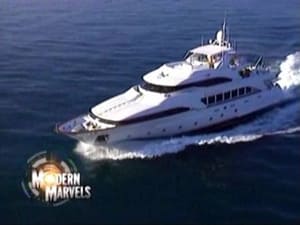
S9 Ep11
6.0
12th Mar 2002
As we power-up and unfurl the sails on a magical cruise through time, viewers meet the people who’ve devoted their lives to pleasure boating. Traveling throughout the U.S. and Europe, we delve into a world of luxury, adventure, and sport on spectacular vessels ranging from classic yachts to sports boats to the ultimate floating palaces. In this timeless pastime, technological wonders continue to evolve and enthrall.
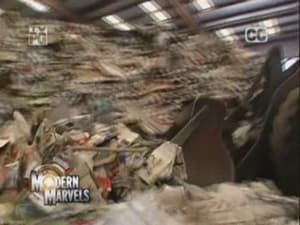
S9 Ep14
6.0
9th Apr 2002
It’s the place where one man’s trash is truly another man’s treasure. Enter the strange and mysterious world of the junkyard, where many pieces actually do add up to a whole. Uncover how junkyard operators create order out of seemingly random piles of junk.
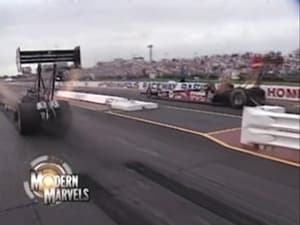
S9 Ep25
6.0
20th Jun 2002
Legendary drivers lead us on a record-breaking race through a century-long search for sheer acceleration that began before World War One, when hot-rodders modified Model-T Fords to see how fast they could go. Today’s dragsters can cover a quarter-mile from a standing start in 4.5 seconds, hitting top speeds above 330 mph. Top driver Gary Clapshaw shows us how to put together a modern dragster and revolutionary designer Bob Norwood unveils his newest car.

S9 Ep28
6.0
8th Jul 2002
They are lethal tools that ensured our survival, altered our evolution, and maintained our dominion over other animals. Though hunting technology is the backbone of a multi-billion-dollar sports industry, current cutting-edge gear is a far cry from prehistoric man's rudimentary tools. From the crude knife to 24-hour digital cameras that monitor animal movement and earmuffs with microphones to amplify outside noise while blocking gunshot sound, we examine the development of hunting weapons and gear.
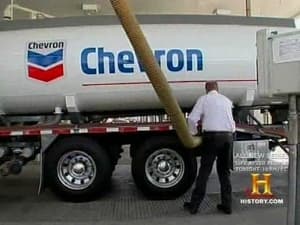
S9 Ep36
6.0
14th Aug 2002
Traces the history and evolution of the world’s most important fossil fuel. Without gasoline, modern life would grind to a halt. Americans use about 360-million gallons of gas every day. And though most of us could not function without gas, very few understand what it really is, how it is made, what all those different octane numbers really mean, and how researchers developed cleaner burning gasoline. All these questions will be answered as we look at the history of this “supreme” fuel.

S9 Ep45
6.0
27th Sep 2002
From the outhouse to the smart house, our lives have improved drastically in the last 150 years. Convenience and comfort have always been considerations in home design. Yet, it is often these everyday appliances and gadgets that we take for granted. In Household Wonders II, we’ll take a peek into one of today’s fully-automated homes that is so smart, the owner can operate everything from the home theater to the outdoor waterfall at a push of one button.
S9 Ep49
6.0
22nd Oct 2002
Throughout railroad history, disasters lay at the heart of progress since expansion and profit proved the main goals of management. In 1875 alone, an average of 22 train accidents happened daily; in 1890, over 6,000 people were killed. We’ll examine how safety, once a secondary consideration, became a primary goal.
S10 Ep17
6.0
10th Apr 2003
With a thrilling combination of dramatic reconstructions and 3-D animation, we step back in time to the Golden Age of Greece and the birth of democracy, to an era of unparalleled human creativity that produced the magnificent architecture on the Acropolis. Powerfully evoking the pagan rituals that made the Acropolis the heart of Athenian life, we explore all four key buildings: the Propylaia, the Erectheion, Athena Nike, and the Parthenon–the most influential building in Western civilization.
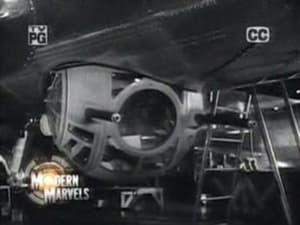
S10 Ep19
6.0
1st May 2003
In war, certain missions demand the most and constitute much of the legends of bravery. Journey back to the Second World War when fearless airmen manned the B-17′s belly guns–glass bubbles that at any moment could become their coffin. The ball turret gunners called their work “flying the ball”, others called it crazy!
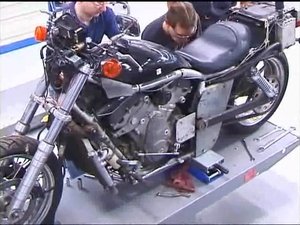
S10 Ep24
6.0
21st May 2003
From humble beginnings in the Davidson family garage to one of the world's most famous companies and a marketing juggernaut, Harley-Davidson is known for one thing American built motorcycles. This program explores the company's history, technological advances, and the culture behind a American original.
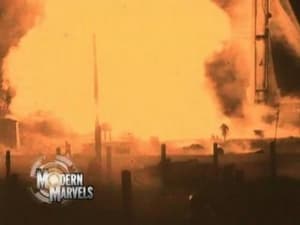
S10 Ep34
6.0
2nd Jul 2003
Engineering disasters can result in personal tragedy, national humiliation, and economic ruin. But buried within their wreckage lie lessons that point the way to a safer future. The fire at the Las Vegas MGM Grand Hotel, the collapse of Seattle’s Lacey V. Murrow Floating Bridge, the car that spurred creation of the National Highway Transportation Safety Administration, and the flaw that grounded the first commercial jet are among the engineering disasters that led to improvements in design and safety.
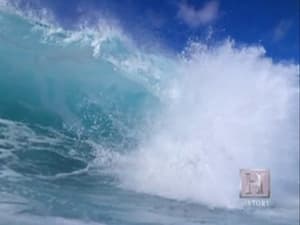
S10 Ep35
6.0
8th Jul 2003
Among the most mysterious disasters, tsunamis–Japanese for “harbor waves”–claimed over 50,000 lives in the 20th century! Generated by offshore earthquakes, volcanic eruptions, and landslides, these giant water walls result from large-scale displacement of seabed sediment. Rolling rapidly over the ocean floor, a tsunami rises to rapturous heights when it hits land. Scientists in Japan, Hawaii, Oregon, Washington, and California show the latest technology used to predict these killer waves.
S11 Ep1
6.0
16th Jan 2004
Forged in Europe’s shadow, Russian small arms were once dismissed as crude copies. Often lacking the finish of Western counterparts, Russian guns have been battle-proven worldwide, with their emphasis on robustness and simplicity of design. Review the long history of Russian small arms–from Peter the Great to the Cold War.
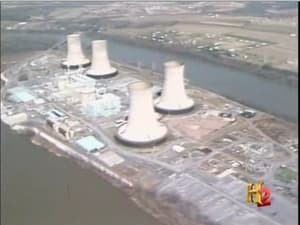
S11 Ep26
6.0
8th Jul 2004
Nuclear research ranges from well-known applications, such as bombs and reactors, to little-known uses in medicine, food preparation, and radiation detection. It’s also spawned ancillary technologies to store nuclear waste and clean up accidents.
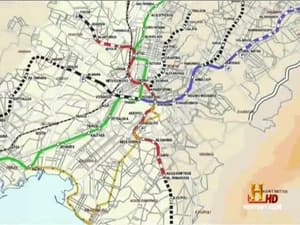
S11 Ep31
6.0
18th Aug 2004
Under Athens' bustling metropolis, an unique engineering project transformed the city, building a new underground Metro system, while uncovering secrets of its past, alleviating chronic traffic problems, and preparing for the 2004 Olympics. But to dig stations and tunnels in the heart of one of the world's oldest sites of continuous habitation, engineers had to accommodate the largest archaeological excavations conducted to date in Athens. Thousands of invaluable artifacts were discovered, spanning more than 25 centuries. We talk with leading project engineers and archaeologists to explore the difficult balance between progress and preservation. Unique library film records every stage by which gigantic Tunnel Boring Machines cut under some of the most famous architecture of the ancient world. Despite problems and delays, the Athens' Metro finally opened in January 2000. Its dazzling modern stations at the center of the city contain ancient artifacts found at the station sites.
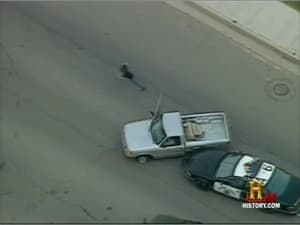
S11 Ep43
6.0
22nd Sep 2004
Join us for a high-speed look at police pursuits in an adrenaline-filled hour focused on the history and evolution of the technologies that give law enforcement the upper hand when pursuing bad guys. From the days of chasing moonshine runners in “hopped up” vehicles during Prohibition to the most recent 100-mph freeway chases, patrol cars have undergone many advances. We also examine how communications have improved, the use of airborne resources, and pursuit on the high seas.
S11 Ep44
6.0
28th Sep 2004
A look at the technology that changed the serious game of Search and Rescue forever. At the mouth of Oregon’s Columbia River, we visit the Coast Guard’s Motor Lifeboat School, the training ground for High Surf Rescue. Then, we trace the evolution of life-saving technology at sea, and learn why the EPIRP (Emergency Position Indication Radio Beacon) is the pleasure boater’s greatest friend. And we take a look at how the U.S. Navy deals with accidents classified as “Man Overboard” in the 21st century.
S11 Ep57
6.0
28th Oct 2004
The Japanese attack on Pearl Harbor was a move of unprecedented aggression that shook the U.S. out of its peaceful slumber and into WWII. But for 60 years, veterans of the destroyer USS Ward claimed they sank an enemy submarine outside the harbor more than an hour before the aerial attack began. The wreck was never found, and the story was dismissed. In August 2002, a dive team crossed its path and their find made headlines worldwide. We travel to Pearl Harbor to investigate the midget sub mystery.
S11 Ep65
6.0
1st Dec 2004
The US capital boasts many memorials, but none with a more bizarre history than the obelisk erected to America's first president. Over 55 stories high and weighing over 90,000 tons, the Washington Monument stands stalwart in the city's center. From concept to completion, it took 100 years–years filled with mystery, ceremony, conflict, government action, and inaction. Proposed in the late 1700s by a group of prominent citizens and finished in the late 1800s by the Army Corps of Engineers, the exterior is mainly Maryland white marble, while the interior is made of granite, iron…and a few surprises. How did it come together and why did it take so long? Historians tell stories of stalling bureaucracy, secret societies, and triumphant engineering. Stark and daunting on the outside, we let viewers know what's inside.
S12 Ep15
6.0
9th Mar 2005
It began as a tool used by prehistoric man to attract animals to the hunt. Over time it became an invaluable study aid for the natural scientist and a popular hobby for hunters and fishermen. Join us for a tantalizing look at the history of taxidermy, the craft of preserving animal skins and using them to recreate a still life of the animal as it appeared in life. We also check out fiberglass reproduction, which is gaining popularity as fish and game regulations become stricter. Finally, we examine human subjects in taxidermy. Using the very latest process of plastination, the once taboo science and art of preserving and displaying human corpses, now draws crowds in Europe, Asia, and the US, proving the age-old practice continues to mesmerize us!
S12 Ep30
6.0
16th Jun 2005
In the 1930s, Japanese designers created a range of warplanes, culminating in the legendary Ki-43 Oscar and the A6M Zero. As the war turned against Japan, designers created the rocket-powered Shusui, the Kikka jet fighter, and the experimental R2Y Keiun. We also disclose frantic preparations to assemble a secret air force of jet and rocket planes to counter an anticipated US invasion in1945, and chronicle post-war aviation and the birth of the Japanese rocket program in the 1950s and ’60s.
S12 Ep33
6.0
1st Jul 2005
SECRETS OF SOVIET SPACE DISASTERS is one of our century’s most shocking hidden stories. Since the end of communism much has come to light about the failures of the Soviet’s systems. This program will uncover how personal rivalries, shifting political alliances and bureaucratic bungling led to the dismal failure (as well as more than 150 recorded deaths) of the Soviet space program. This one hour History Channel program will uncover never before seen footage from Russian sources that unveils THE SECRETS OF SOVIET SPACE DISASTERS.
S12 Ep34
6.0
5th Jul 2005
Join our journey along monumental feats of engineering that preserved America's natural wonders while paving the way towards her future. Travel the Donner Pass in the Sierra Nevada Mountains, site of a dark chapter in US history. Today, crews use the latest technology to keep I-80 open during the worst winter storms. Enjoy the view while traveling to the summit of Pike's Peak in Colorado, inspiration for America the Beautiful. The "Going-to-the-Sun-Road" slices through Montana's majestic Glacier National Park, crossing the Continental Divide and allowing motorists unsurpassed views of mountain scenery. Outside Denver, the Eisenhower Memorial Tunnel, carved through mountain rock, united eastern and western Colorado. And the Blue Ridge Parkway, which took 52 years to complete, snakes through large, scenic swatches.
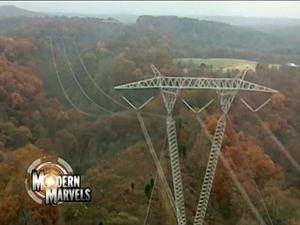
S12 Ep46
6.0
31st Aug 2005
We begin with electrical linemen perched precariously out a helicopter door, repairing 345,000-volt high-tension power lines. They are part of an army of technicians and scientists we'll ride, climb, and crawl with on this episode. They risk their lives so that we can have the services we take for granted–electric power and 21st century communications. They lay and maintain the wire that connects us one to another, as well as America to the rest of the world. The hardwiring of America is a story that is nearly two centuries old. And though satellites and wireless systems may be challenging the wire, it's not dead. Fiber optic cable, lines that transmit light, became a player in information delivery in the late 1970s. We may be entering a "wireless" age, but the infrastructure of wires laid by visionary scientists and industrialists are still vital to America. Wire technology will be with us, continuing to provide service, well into the next century.
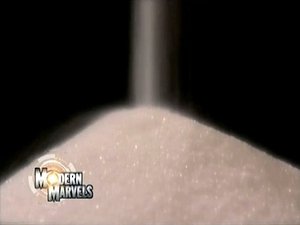
S12 Ep51
6.0
14th Sep 2005
The sugar industry came of age on the backs of slaves toiling in Caribbean fields, and British desire to control production of sugar and its byproduct, rum. Sugar also played a surprisingly critical part in America's battle for independence. Tour a sugar plantation on Maui, Hawaii to get an inside look at how cane sugar is produced today and learn how the sugar stalks are put through an extensive process of extraction and purification–and how a ton of harvested cane results in 200 pounds of raw sugar. Learn the technology behind creating the sweetener in all of its permutations, including corn syrup, brown sugar, powdered sugar, and cube sugar, and how it's used in candies, soda, and sauces as well as more exotic uses such as in pipe tobacco and processed meat.
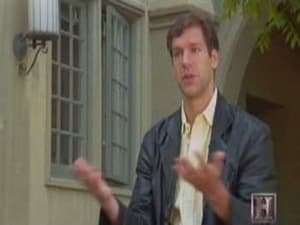
S13 Ep39
6.0
18th Sep 2006
The greatest religious structures are marvels of engineering, technology, and invention, representing not only the glory of God, but also the ingenuity of man.
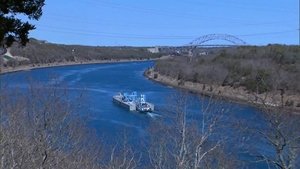
S13 Ep44
6.0
26th Sep 2006
The Atlantic Intracoastal Waterway is comprised of a system of canals, land cuts, and a series of natural and artificial barrier islands, which provide a protected passage for low-draft vessels wishing to avoid the tumultuous currents of the Atlantic Ocean.
S14 Ep31
6.0
29th Aug 2007
Volcano technology is examined. Included: attempts to monitor and control activity.

S14 Ep42
6.0
10th Dec 2007
The dangers associated with Electric Shock are real. It kills and injures thousands each year. In the last 100 years we've corralled its power to create marvelous devices. We'll explore the stunning ways that electric shocks occur - from lethal prison fences to the slippery shock of an Electric Eel.
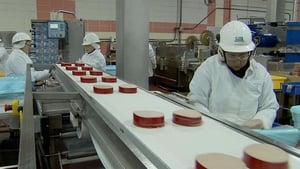
S14 Ep43
6.0
17th Dec 2007
They're the meat in our sandwiches. We will take you behind the deli counter to reveal the secret ingredients in boloney. Watch a master sausage maker craft salami, and pile it on at Carnegie Deli with their famous mile-high pastrami sandwich.
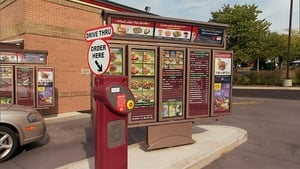
S14 Ep44
6.0
24th Dec 2007
Carl's Jr., Jack in the Box, Wendy's, Burger King or McDonald's. Fast food joints dominate the American landscape to the tune of $150 billion dollars in annual sales.
S15 Ep34
6.0
19th Nov 2008
A celebration of the horse, the animal that helped mankind change the world; the thoroughbred racing industry in Kentucky; how a Minnesota logging company uses real horsepower; a Colorado program pairs horses and prison inmates.
S16 Ep14
6.0
13th May 2010
Size does matter. We'll size up the biggest of machines, and their smallest counterparts. First we go to France to find out what goes into assembling the world's largest jetliner, the Airbus A380. Then, fly with microjet pilots in the world's smallest jets. Witness a race between a huge Boss Hoss 425 horsepower motorcycle and an 18 inch tall pocket bike. Take the world's smallest production car for a ride and see just how many choir members we can fit into a super-sized limousine. See a mammoth Caterpillar front loader in action, in an open pit coal mine, and dig up the backyard with a loader that's no bigger than a lawnmower. Finally, walk inside an enormous diesel engine powering an 80,000 ton container ship and eyeball a tiny one driving a five pound model airplane.
S17 Ep12
6.0
21st Jan 2011
In our lifelong battle to fight friction, Grease–in all its forms–is the unsung hero. Journey deep into places few people ever get to see, to discover the "hidden" uses of one of our most slippery products inside giant machines. We'll also investigate how it's made in a factory in New York, as well as what new advances some are working towards for grease of the future. But in the meantime, we'll witness how it is currently used inside a US Navy aircraft carrier, San Francisco's famous cable cars, elevators and escalators, assembly lines, huge excavators, amusement park rides, and even the Panama Canal. From pig fat to nano-particles… amazing Grease keeps everything rolling along–smooth and fast.
S18 Ep12
6.0
16th Jan 2012
160 million Americans visit a convenience store every day. Why? Because it's fast. But what you probably didn't know is how every detail of its design has been engineered to work that way. Step inside one of the busiest 7-11's in America and find out what makes it tick. And go behind the scenes to see how favorite innovations–like slurpees, turbo ovens, and beef jerky–are made. The science of convenience will amaze you!
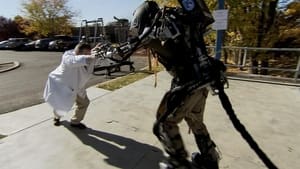
S19 Ep2
6.1
23rd Jul 2013
Modern Marvels is going big, and counting down. We take the "best of" Modern Marvels and give you the MEGA Top 10 countdown. On this edition: Awe-Inspiring Machines–featuring the top ten mightiest, strangest, and most unique innovations from our archives.
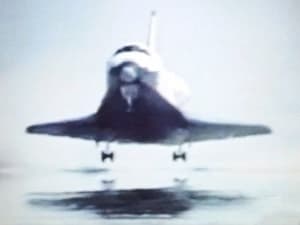
S3 Ep1
6.1
20th Aug 1995
Considered by many to be the most astounding machine ever built, this reusable spaceship is the apex of flight technology. This program recounts the challenges and the critical issues that led to NASA’s decision to create an “airplane” to navigate space.
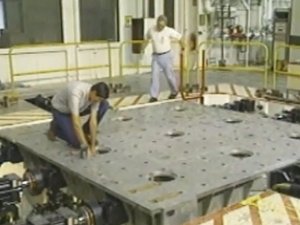
S10 Ep12
6.1
18th Mar 2003
Made up of soldiers and civilians, scientists and specialists in an enormous variety of fields, the US Army Corps of Engineers was created over 200 years ago by Congressional mandate to respond, in peace and war, to the nation's engineering needs. The world's premier engineering and research and development agency, the Corps has blown up, excavated, grated, dredged, and remolded the shape of our continent as we pushed to expand the nation and harness the forces of nature!
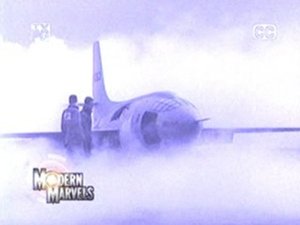
S10 Ep37
6.1
16th Jul 2003
For decades, the sound barrier loomed as an impenetrable wall against manned flight that buffeted planes with shock waves as they approached the speed of sound. Scientists thought the barrier couldn’t be breached–until the development of jet technology and rocket fuel at the end of WWII. This is the dramatic story, told through the eyes of many who were there, of the work leading up to October 10, 1947, when 24-year-old test pilot Chuck Yeager smashed through the sound barrier in a Bell EM XS-1 /EM aircraft.
S11 Ep7
6.1
18th Feb 2004
A look at the “science of safety” as applied to Indy or NASCAR racing. From tires to roll-cages to hood flaps, we examine the incredible technology that’s helping prevent crashes and enabling drivers to survive the inevitable ones. See how today’s innovative minds digitally reconstruct crashes and design new technology that keeps pushing the limits of racing. The drivers may grab the glory, but they wouldn’t dare get behind the wheel if it weren’t for the guys in white lab coats.

S11 Ep68
6.1
21st Dec 2004
It comes in many deadly shapes and sizes, and the transportation of dangerous cargo is one of the most meticulously planned procedures in the shipping world. We hitch a ride on a “dynamite run” from explosives factory to construction site; learn how liquid natural gas is shipped, a fuel that could vaporize entire city blocks if ignited; accompany a Drug Enforcement Administration truck as it transports confiscated illegal drugs to an incinerator site for destruction; fly with Air Net as it moves radioactive pharmaceuticals from factory to hospital; and tag along with two tigers, part of a breeding program for endangered species, as they travel from Texas to Ohio. As each story progresses, we explore the history of the transport of that particular form of Dangerous Cargo.
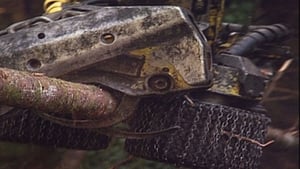
S10 Ep36
6.2
9th Jul 2003
When Paul Bunyan cried "Timber!", he never foresaw today's cutting-edge, controversial industry that feeds a ravenous, lumber-crazy world–a world striving to protect nature while devouring it. Come into the woods to see how he-men and hi-tech combine forces to topple 4-billion trees annually; journey to 19th-century America, when lumberjacks cut a legend as large as the timber they felled; and travel with a tree from stump to sawmill and learn its non-wood uses–from aspirin to film to toothpaste!
S10 Ep43
6.2
5th Aug 2003
How does technology grasp nature’s most violent, chaotic storm? For half a century, U.S. meteorologists have been building a countrywide system of Doppler Radar, widespread automated data-gathering stations, geostationary satellites, and sophisticated computers to track and study tornadoes. Even with this massive scientific effort, forecasters can only begin to understand why tornadoes form and how to predict them. We’ll look at cutting-edge systems that attempt to measure the unmeasurable.
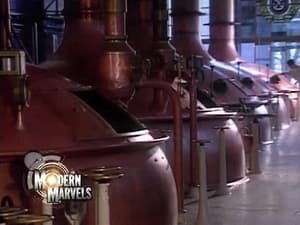
S12 Ep58
6.2
16th Nov 2005
It's one of the world's oldest and most beloved beverages–revered by Pharaohs and brewed by America's Founding Fathers. Today, brewing the bitter elixir is a multi-billion-dollar global industry. Join us for an invigorating look at brewing's history from prehistoric times to today's cutting-edge craft breweries, focusing on its gradually evolving technologies and breakthroughs. We'll find the earliest known traces of brewing, which sprang up independently in such far-flung places as ancient Sumeria, China, and Finland; examine the surprising importance that beer held in the daily and ceremonial life of ancient Egypt; and at Delaware's Dogfish Head Craft Brewery, an adventurous anthropologist and a cutting-edge brewer show us the beer they've concocted based on 2,700-year-old DNA found in drinking vessels from the funerary of the legendary King Midas.
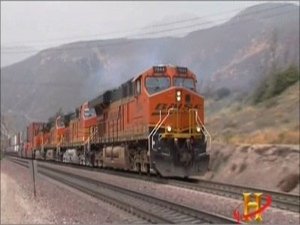
S13 Ep42
6.2
20th Sep 2006
Explore the history of freight transportation from its humble beginnings as tramways in mines to complex system of rails that stretches to every corner of the nation.
S14 Ep23
6.2
27th Jun 2007
From the giant cheese factories of Wisconsin to the goat farms of Northern California, this episode explores cheese.
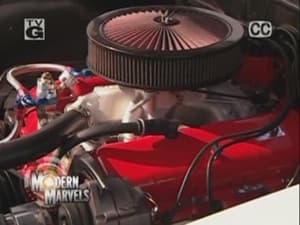
S9 Ep22
6.2
11th Jun 2002
Pop open the hood, check out the carbs, and hear the engines roar as we journey back to a time when gas was cheap, emission controls non-existent, and all that mattered was acceleration and speed. During the 1960s and ’70s, GM, Ford, and Chrysler competed to create high-performance cars at prices teenage baby boomers could afford. Featuring interviews with John DeLorean, creator of the Pontiac GTO, and his marketing partner Jim Wangers, we go behind the scene of the muscle-car wars.
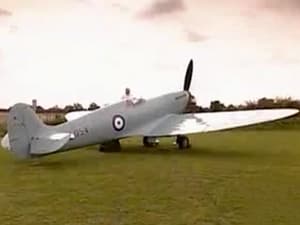
S9 Ep52
6.2
30th Oct 2002
Designed in 1935 by R.J. Mitchell, the Supermarine Spitfire was a revolutionary fighter plane, which proved to be more than a match for its German opponents. In 1940, it helped turn the tide of WWII by providing vital air defense during the Battle of Britain. Combining interviews with surviving Battle of Britain fighter aces, archive film, and reenactments, we take you inside the cockpit to reveal the courage and resolve of the men who halted Hitler’s advance and became legends of the skies.
S10 Ep22
6.2
10th May 2003
Born out of a desperate need to defend the Motherland, Stalin enlisted the ideas of an American engineer, J. Walter Christie, to develop in total secrecy one of the most formidable tanks in history. In 1941, straining under Operation Barbarossa, Stalin ordered his new weapon into the fray and changed the course of WWII. Using detailed reenactments and interviews, we reveal what life was like inside Russia’s “secret” weapon, the T-34, and the horrifying reality of combat on the Eastern Front.
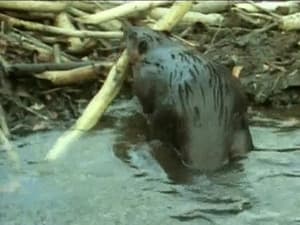
S11 Ep11
6.2
31st Mar 2004
Towering skyscrapers buzzing with life, intricate tunnels connecting entire communities, mighty dams that tame the wildest rivers–this is construction animal style! Take a walk on the wild side as we investigate common creatures seemingly designed to alter their habitat and remake the world. Our ability to learn and capacity for abstract thought may separate us from beavers, honeybees, birds, termites, and spiders, but these engineers of nature remind us that we’re merely the latest in a long line.

S12 Ep23
6.2
11th May 2005
The history of civilization has been built on the back of brick, and it’s been said that “architecture itself began when two bricks were put together well.” From great Egyptian temples to the Roman aqueducts, the Great Wall of China, and the dome of the Hagia Sophia, brick is one of the oldest, yet least celebrated, building materials manufactured by man. In this hard-packed episode, we explore brick’s past, highlighting defining moments, such as the Great London Fire of 1666, the zenith years of brick in the New York Hudson River Valley, and brick as an essential building block in infrastructure and industry. We’ll feature advancements through the ages as well as construction techniques, trends, and the future of brick construction. Essentially, brick is still just burnt clay…it has been around for thousands of years, but continues to serve as the backdrop of the modern age.
S14 Ep40
6.2
27th Nov 2007
A pig is as smart as a three-year-old human. The pancreas, heart valve and intestines of the pig have been transplanted into human bodies. But the primary use of the pig is for food. Watch the transformation into bacon, ham, ribs and sausage.
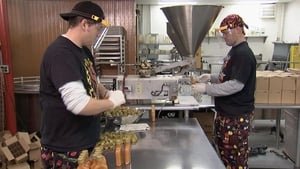
S16 Ep9
6.2
18th Mar 2010
Follow the soybean from field to refinery with CHS, Inc. as they convert billions of soybeans into vegetable oils, flour, and soy meal. These products, in turn, end up in salad dressings and margarines, baked goods, animal feed and even bio-fuel and plastics. Pay a visit to the Kelley Bean Company which cleans 80,000 pounds of dry beans per day. B & M Baked Beans stirs up some New England tradition by baking beans in steel kettles and brick ovens. Then, Italian chef and bean lover Cesare Casella whips up a few bean dishes using rare heirloom beans, some of which cost $35 per pound. For dessert, Japanese pastry makers prepare traditional bean-based confections with the azuki bean. Fry up some falafel and puree some beans into a paste called hummus with the most widely consumed legume in the world…the chickpea. Last but not least, the makers of Beano explain how it works to prevent that unfortunate bean byproduct: gas.
S4 Ep1
6.3
2nd Sep 1996
In 1912, a headlight-maker and an auto magnate built the first cross-country road to spur the demand for new cars; 70 years and $125 billion later, the highway system had grown to 42,000 miles. Rare photographs and interviews tell the incredible story of the “paving of America”.
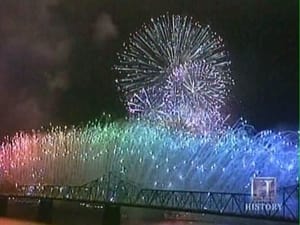
S6 Ep36
6.3
27th Sep 1999
Since the invention of gunpowder, fireworks have thrilled audiences around the world. We’ll view highlights of fireworks exhibitions throughout history, and go behind the scenes to explore how science and art mingle in this unique, ancient craft. The world’s preeminent fireworks families explain how they create their spectacles.
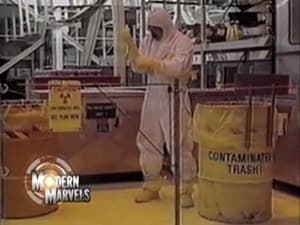
S10 Ep31
6.3
25th Jun 2003
Toxic traffic is everywhere! An average of 800,000 shipments of hazardous materials hit our highways and railways daily. From Wild West wooden crates filled with explosives to HAZMAT containers of nuclear waste, we shadow dangerous cargo. We ride shotgun on a hazardous material shipment that's tracked by satellites; hunt down the hush-hush "ghost fleet"–trucks carrying classified government materials; and board a Con-Air flight moving another kind of nasty stuff–dangerous felons!
S10 Ep57
6.3
24th Sep 2003
General quarters! You’re going into battle aboard the century’s deadliest warships–the Dreadnought, Bismarck, Missouri, Yamato. Follow the 1916 Battle of Jutland, decisive World War II clashes in the Pacific, plus Persian Gulf War action.
S10 Ep70
6.3
7th Nov 2003
Hop into the cockpit for a daring century-long ride through the history of aircraft weaponry–from the very first handgun fired from a biplane. Features interviews with Chuck Yeager, Korean War ace Major Frederick Blesse, and pilots from Desert Storm and Kosovo, and historic footage of “Red Flag” exercises, when German pilots flew Soviet MiGs.
S11 Ep23
6.3
15th Jun 2004
When you tap your faucet does clean, pure water flow? Can your city supply enough water for industry, firefighting, and street cleaning? U.S. public water-supply systems serve nearly 99 percent of the population, yet few users know how the system of aqueducts, pipes, and pumps work. Learn the colorful history of the water systems in Chicago, New York City, and Los Angeles when we scour the past and look to the future, including desalination plants that turn seawater into drinking water.
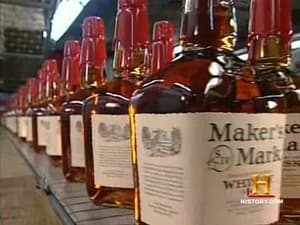
S11 Ep29
6.3
4th Aug 2004
From water and grain…to mash…still…vat…barrel and bottle–the distilling of alcoholic spirits is a big business and near-sacred religion. Its acolytes eye the color, swirl the glass, inhale the bouquet, sip, and then ponder their ambrosia.
S11 Ep47
6.3
1st Oct 2004
One of the youngest and smallest nations, Israel has produced some of the world’s fiercest weapons. In 1952, shortly after its War of Independence, Israel unleashed the Uzi…a submachine gun that set the standard for nearly 50 years. Between 1950 and 1980, Israel fought three wars, and superior weapons became a matter of survival. We examine the Negev Machine Gun and the Galil Assault Rifle, designed to survive the rigors of desert warfare, and the Tavor 21, a lightweight 21st-century assault rifle.
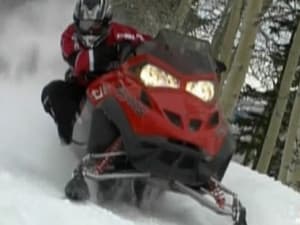
S12 Ep11
6.3
23rd Feb 2005
Come in from the cold while we explore some of Earth's most frigid places and examine how man copes with sub-zero climates. With the advance of technology, our boundaries have expanded–from the North and South Poles, to the depths beneath the Arctic and Antarctic sea ice, to the Moon, Mars, and outward to Saturn. Enter these forbidding territories, guided by a special breed of experts as we inspect the new US South Pole Station, try on the latest Polartec fashions with anti-microbial fibers, ride on the newest snowmobiles and Sno-Cats, sail through glacial waters on ice-breaking ships, and fly on an LC-130 transport plane. And we'll see what NASA has on the planning board for deep-space exploration, including a beach-ball robot explorer, and learn from scientists studying fish in the waters off Antarctica to understand glycoproteins, which may keep frozen tissue healthy longer for transplantation.
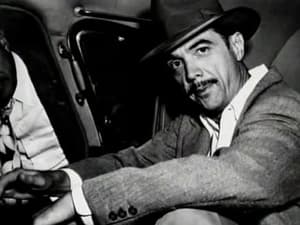
S12 Ep12
6.3
23rd Feb 2005
The Oakland Bay Bridge in San Francisco boasts more superlatives than any bridge on earth. Bridge builders of the depression era defied logic and economics and succeeded in building an 8 mile long structure connecting Oakland and San Francisco. Engineer Charles Purcell built two suspension bridges side by side on the San Francisco side of the bay, then built the largest bore tunnel in the world to connect the west side with Oakland’s eastern shores. Modern Marvels shows you how this great feat was accomplished.
S12 Ep47
6.3
31st Aug 2005
Since time immemorial, flashes of light have startled our senses and piqued our imagination. But it’s only in recent years that we’ve begun to unlock the secrets behind this terrifying phenomenon, as we learn in this high-tech look at how man has tried to control nature throughout history. Lightning kills nearly 100 people yearly in the United States and injures hundreds of others. Meet men and women who look for new ways of detection, prevention, and how to save lives when Mother Nature strikes!

S13 Ep5
6.3
14th Feb 2006
It pulls, stretches, bubbles, hardens, crunches, and melts! We eat about 7-billion tons of it yearly. We’re talking about Candy–loved by kids and savored by adults. Candy-making evolved from a handmade operation to high-tech mass production. Nowhere is that more apparent than at Hershey’s. On a tour of their newest production facility, we learn how they process the cocoa bean. At See’s Candy, we see how they make their famous boxed chocolates–on a slightly smaller scale than Hershey’s. We get a sweet history lesson at Schimpff’s Confectionery, where they still use small kettles, natural flavors, and hand-operated equipment. Then, we visit Jelly Belly, purveyors of the original gourmet jellybean. Saltwater-taffy pullers hypnotize us on our sweet-tooth tour; we gaze at extruders making miles of licorice rope; and watch as nostalgia candy bars Abba-Zaba and Big Hunk get packaged. And in this sugary hour, we digest the latest sensations–gourmet chocolates and scorpion on a stick!
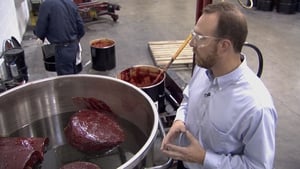
S13 Ep47
6.3
4th Oct 2006
Invented by the Chinese in about 3000BC, it spread the word of God and war. It set us free and spelled out our rights. It tells stories, sells products and solves crimes. It's ink and it's everywhere!
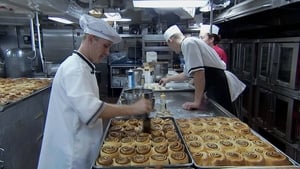
S13 Ep53
6.3
28th Nov 2006
It slices and squeezes, sorts and sizes, mixes and cooks. Every morning we count on it to keep our orange juice fresh, our eggs whole, our cereals flaked, and our McGriddle syrupy--this is Breakfast Tech.
S14 Ep38
6.3
12th Nov 2007
Take a look at the innovations designed to hold off a global warming meltdown.
S15 Ep37
6.3
8th Dec 2008
The car wash's in America are a $25 billion dollars a year industry, with tunnel systems to in-bay automatics, we'll show you how America keeps it's cars clean. We'll visit the largest car wash, seven acres wide which includes a dog wash, chapel, and barber shop. And then to a wash which uses trained electronic eyes, auto conveyors, and mega vacuums which can hold up a bowling ball. We also show tips for cleaning a car at home. Plus we'll add tar, glue, egg, bird droppings, and a bucket full of sludge to a $160,000 Porsche, and then challenge a detailer to clean it off. Also, see how cars are built to survive a car wash.
S16 Ep1
6.3
14th Jan 2010
You know the old saying "dull as dirt"…wrong! In Las Vegas we'll see how thousands of tons of dirt transform a stadium into a Supercross course, and in New Jersey we'll slog into a secret bog to collect the special mud that every major league team relies on to give extra grip to baseballs. Then, we'll join in the down and dirty fun of mud wrestling at a state fair in Hawaii. In Tucson we'll see how modern adobe and stunning rammed-earth homes are made. To farmers, "dirt" is "soil" and in a teaspoon of healthy soil there are more living organisms than people on our planet. We'll find out where they came from at a sprawling potting soil facility in central California where huge earth moving equipment adds tons of dried kelp, bat guano and other ingredients to dirt. At exclusive spas we'll watch patrons submerge in mud. Finally, we'll visit the Tide detergent factory–why? To get the dirt out, of course.
S16 Ep18
6.3
10th Jun 2010
Where in Washington D.C. is the nation's most incredible treasure chest? It's a library unlike any other in the world–the U.S. Library of Congress. Explode the myth that this 200-year-old institution is simply "where members of Congress borrow books." Viewers are taken beyond the magnificent Jefferson Building Great Hall into the secret vaults where more than 600 miles of shelves hold 130 million items, many of them priceless treasures–from George Washington's hand-written diaries to Galileo's first images of the moon to the original camera film of the movie Frankenstein. See how a staff of 4,000 catalogues protects and preserves these treasures and distributes them globally via a new World Digital Library.
S17 Ep14
6.3
4th Feb 2011
America would come to a standstill without trucks. Trucks transport a staggering 70 percent of all the nation's goods. Explore the amazingly diverse world of American trucks and the colorful men and women who drive them. Join country superstar Brad Paisley and his crew of truckers on the road between Little Rock and Tulsa–racing the clock to be on time for Brad's next concert. In Dearborn, Michigan, climb aboard one of the most popular pickups–the Ford F-150–as it tackles a devilish test course. And in Virginia, see how fast the world's most nimble tow truck can extract a car from the tightest parking spot imaginable. Meet a Mack truck fanatic and his cool collection of vintage models, and ride-along with an unsung hero with a truly dirty job–operating a truck designed to empty and clean portable toilets.
S18 Ep10
6.3
2nd Jan 2012
From the beginning of time we've worked to protect ourselves against the very element that keeps us alive…Water. We love it and hate it. With water covering 75% of the Earth's surface, it's no wonder we struggle to stay safe and dry. We fight against ferocious weather and floods with state-of-the-art roofing, wraps, tarps, tunnels, clothing, boats, and much more… devising extreme tests to probe the limits of our modern waterproof technology.

S10 Ep25
6.3
22nd May 2003
For more than 3,000 years, emperors and generals, dictators and police, criminals, clerics, and even medical doctors have created and used a vast array of torture devices–everything from the ancient Greeks' Brazen Bull, which slowly barbecued the victim, to the elaborate mechanical apparatuses of the Spanish Inquisition. A medical doctor who specializes in victims of torture reveals how the human body responds to their use–from the earliest excruciating contrivances to the more modern.
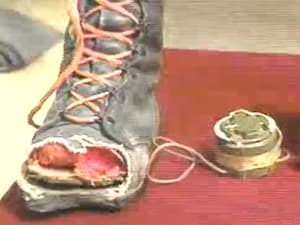
S10 Ep51
6.3
21st Aug 2003
A major battlefield weapon since the American Civil War and the stuff of nightmares ever since, the civilian toll from landmines remains immense. Inflicted by an enemy that can’t be seen, landmines are littered throughout 64 countries, making life a game of Russian roulette for two-thirds of the world’s poorest nations. Featuring an interview with Jerry White, co-founder of Landmine Survivor’s Network, who lost a leg due to a landmine in Israel.
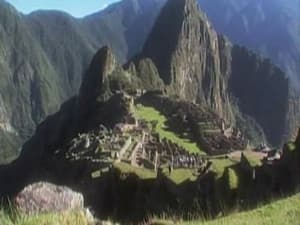
S10 Ep55
6.3
24th Sep 2003
The engineering marvel Machu Picchu sits perched on a ridge in the Peruvian Andes. Originally built by the Incas, this magnificent structure remains a mystery. Was it an observatory? Pleasure retreat? Fortress? This program presents the most current theories.
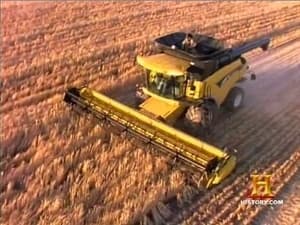
S11 Ep49
6.3
6th Oct 2004
Cutting, digging, picking, stripping, shaking, and raking–whatever the crop, there's a custom machine to harvest it. It all began with handpicking and today it's often one man and one machine harvesting hundreds of acres in a single day. The farmer may even get a little help from satellites. Far above the earth, high-resolution photography is giving the grower more opportunities to cut costs and maximize the harvest. From the debut of the sickle in ancient Egypt to McCormick's famous Reaper to the field of ergonomics that assists human harvesters, we'll dig into the past and future of the harvest.
S17 Ep8
6.3
17th Dec 2010
Since the dawn of the Industrial Revolution, the United States has stamped, carved, cut, built and assembled its way into becoming the super power of product production. However, in the last 20 years, the "Made in America" tag began to fade, as the manufacturing landscape of industry went overseas. So what is still Made in the USA? Visit the world's biggest and oldest flag manufacturer, which has made some of the most famous flags in history. Go inside the factories that produce the last athletic shoe made in the US. See the strangest form of alternate transportation known to man–completely assembled in 30 minutes. Check out a hot toy company that believes it's imperative to keep their work here at home. Top it all off with some great food–some American success stories that may seem foreign at first glance. It's not just a label. It's a proud and important tradition.
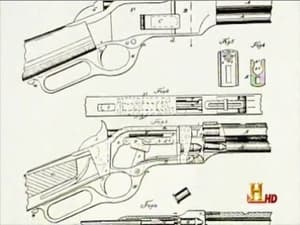
S9 Ep3
6.3
28th Jan 2002
Winchester…the name still evokes images of the Wild West and the taming of the frontier–it was the first reliable repeating rifle and settlers brought it along as they moved west. Prized by Civil War soldiers, the lever-action rifle was preferred by lawmen and outlaws alike. A classic Winchester can command upwards of $100,000 from collectors trying to buy a piece of the Old West. We see how a shirt manufacturer named Oliver Winchester became the most famous gun maker of the American West.
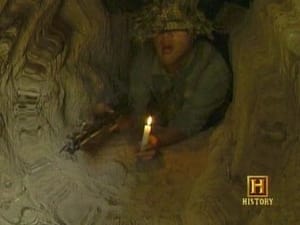
S9 Ep5
6.3
30th Jan 2002
Here is the heroic story of a intrepid band of infantry soldiers, the "Tunnel Rats", charged with a daring mission–to search for, find, and destroy a secret subterranean network of enemy tunnels in Vietnam. Armed with only a flashlight, valor, and a .45, they faced a determined foe and overcame lethal odds, uncovering secret enemy arms and intelligence caches. Tragically, many of these volunteers died and others were seriously wounded on this terrifying suicide mission.
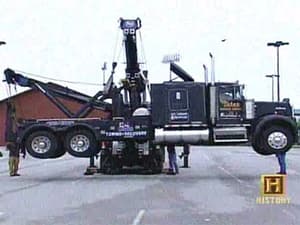
S9 Ep37
6.3
15th Aug 2002
Think you know towing? As simple as engaging a tow man when your car is stalled? From mighty tugboats that guide massive ships safely into port, dizzying roller coasters that send cars careening up and down hills, to funicular railroads that climb mountainsides, when it comes to towing, being a "drag" was never so good! We also watch a 125-year-old church as it's towed on the back of a flatbed truck, and rocket towards space as we're hauled 20,000 feet-high behind a Boeing 747!

S9 Ep51
6.3
29th Oct 2002
Join us for a walk on the wild side of the history of sexual enhancement and contraception–from Cleopatra’s box of buzzing bees to 17th-century condoms to Internet sex and 21st-century holographic pornography! In an explicit exploration of the aphrodisiacs, drugs, contraceptives, toys, and cyber-tech innovations that have ushered in a brave new world of modern sexuality, we talk to sexologists and historians for ribald romp behind the bedroom’s closed doors.
S9 Ep53
6.3
6th Nov 2002
Modern Marvels examines the ever-changing nature of trash, the history of our efforts to dispose of unwanted material, and the evolving technology used to rid ourselves of solid waste. It will cover the most current high and low-tech ways to “take out the trash” from recycling’s three “R’s” to the 10 Commandments of “Use Less Stuff,” the current admonition of the garbologists.
S10 Ep14
6.3
26th Mar 2003
As Japan bombed its way into the Pacific during WWII, Imperial soldiers carried pride, a sense of invincibility, and an arsenal of clumsy and outdated weapons. Convinced that the tactics and tools that led to victory over colonial enemies would be just as effective against the Allies, Japan would see its weaponry lead to defeat.
S10 Ep39
6.3
23rd Jul 2003
Sandhogs work hundreds of feet down, where it is dark, damp, and dangerous, challenging nature’s awesome forces to drive tunnels through solid rock and sinking mud. They drill and blast, bore, mine, and muck. The painstaking process continues for days and yards, months and miles. Tragically, many sandhogs have been killed or injured in the process, but ultimately theirs is a story of triumph and survival. Join us as we review their impressive achievements and history.
S10 Ep40
6.3
24th Jul 2003
Topless, unobstructed–the convertible completely transforms the driving experience and unlike any other car, sets the driver free. During this face-paced hour, experts highlight the history of the world’s most dynamic car design and the essential quality that makes it so unique. From the very first convertible design in 1915 to modern-day marvels of retractable hardtops, we peer under the hoods to see why the convertible remains the car that everybody wants, but only a few are bold enough to own.
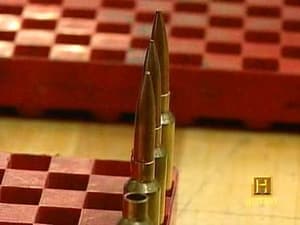
S10 Ep47
6.3
13th Aug 2003
From "safe" bullets that stop hijackers but leave aircraft unscathed to bullets that chain-saw through steel and "smart" bullets computer-programmed to hit a target, this explosive hour examines the evolution of bullets from origin in the 1300s–stones and round lead balls shot from iron and bamboo tubes. Lead balls ruled until 1841 when a conical-shaped bullet changed ammo forever. We learn how to construct a modern cartridge, and at pistol and rifle ranges view demonstrations of modern firepower.
S10 Ep56
6.3
24th Sep 2003
Pound for pound, the small wooden Patrol Torpedo Boats of WWII were among the most powerful warships of all time. Daring PT vets recall why their speed and maneuverability were too much for giant, steel-hulled targets.
S11 Ep13
6.3
14th Apr 2004
The largest manmade machine ever created, the electric power grid traverses the nation from California to Maine, Florida to Washington State. This huge complex of power plants, substations, and transmission lines continually supplies power to millions of customers. In an electrifying hour, we explore the grid’s origin, from Edison’s Pearl Street Station in New York to the post-WWII “Golden Age” to deregulation and restructuring that directly impacted California’s energy crisis in the 21st century.
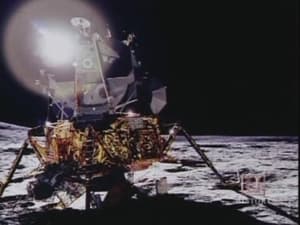
S11 Ep27
6.3
21st Jul 2004
As mankind's greatest achievement of the 20th century, Apollo 11 stood as the apogee of science, exploration, flight, and technological prowess. In scarcely 10 years, America went from rocketing monkeys to landing a man on the moon. Leaving Earth on July 16, 1969, Neil Armstrong, Edwin Aldrin, and Mike Collins pushed the limits of skill and endurance. See and experience the flight of Apollo 11 through the eyes of the astronauts, mission controllers, engineers, and designers who made it happen.
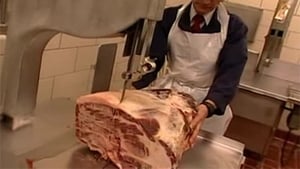
S12 Ep7
6.3
8th Feb 2005
In a carnivorous world, a butcher is a necessary link in the food chain, carving a carcass of unsavory flesh into mouthwatering cuts. We trace the grisly trade's evolution–from yesteryear's butcher-on-every-corner to today's industrial butcher working on a "disassembly" line. We tour the infamous remains of the Chicago Stockyards, where Upton Sinclair, Clarence Birdseye, and refrigeration changed butchering forever; witness high-speed butchering; and travel to a non-stop sausage factory. And if you're still squeamish, a USDA inspector offers the lowdown on HACCP–the country's new system of checks and balances on everything from quality grading to E. coli, Salmonella, and Mad Cow Disease. Finally, we visit the last bastion of old-school butchering–the rural custom butcher, who slaughters, eviscerates, skins, and cuts to his customer's wishes.
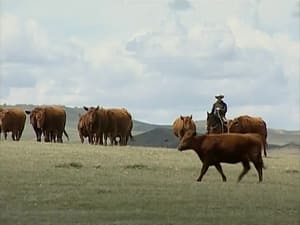
S12 Ep36
6.3
20th Jul 2005
Today’s cowboy plants one boot firmly in the traditions of the Old West and the other in the world of modern technology. Beginning in the 19th century, the era in which the American cattle industry boomed, we examine cowboy technology. Learn how North American cowboys converted saddles, ropes, spurs, and other equipment originally developed by the Spanish, into tools of the trade perfectly suited for the developing cattle industry. And see how the invention of barbed wire revolutionized the cowboy’s world. Step into the 21st century with today’s cowboys who use computer chips, retinal scans, DNA evidence to round up cattle rustlers, and high-tech digital-imaging devices to aid in shoeing horses…and ride ATVs as often as their horses. In the world of rodeo, witness today’s cowboys as they utilize advanced theories of genetics and artificial insemination in an attempt to breed the perfect bucking bull.
S12 Ep40
6.3
3rd Aug 2005
They dig, scoop, suck, and spew an ocean of silt and sediment. Dredgers are the mechanical beasts that fuel the world's economic engine by clearing and deepening ports for mega-container ships. The roots of dredging go back as far as the Egyptians, who used their hands to open channels on the Nile to keep crops watered. The Romans, who used harbor dredging to keep a tight fist on Europe, pioneered the "spoon and bag" dredge to speed up the process. Steam power brought about the first large-scale dredges and helped create the Panama Canal. We'll go aboard two of the largest US dredgers and see how they keep waters moving. And in Holland, we meet the biggest players on the dredging world and witness the launching of the largest dredge ever built. From there, we head to Dubai in the Middle East, where 90 square miles of new islands was dredged from the sea and will now create a pleasure world for the rich and powerful.
S12 Ep56
6.3
14th Oct 2005
At WWII’s outset, US and UK military aircraft designs were woefully behind Germany’s and Japan’s technologically superior planes. But the genius and ingenuity of innovators on both sides of the Atlantic closed the gap. For America, it was a handful of visionaries and their teams; for Great Britain, a creative and thoughtful spirit emanated from the top leadership on down. In this hour, we recount the untold stories of their cutting-edge designs and solutions, some of which proved decades ahead of their time.
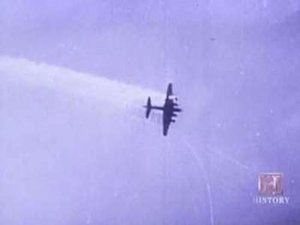
S13 Ep12
6.3
2nd May 2006
This is the true story of the scientific feats and failures of Hitler's Nazi Germany.
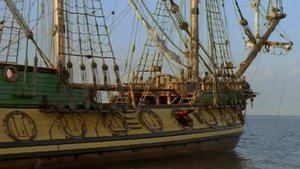
S13 Ep23
6.3
12th Jul 2006
Bold, cunning, and audacious, pirates are a breed of fighting men and women who have terrorized the high seas since before recorded history. At the height of their power in the 1700s they literally influenced the fate of nations when they became embroiled in the rivalry between England and Spain. This special will visit maritime museums and shipwreck sites, utilize walk-and-talk demonstrations of fire arms, swords, and navigation instruments to help spotlight the innovations pirates brought to maritime technology. Includes a look at how many pirates modified their ships to make them faster and more powerful.
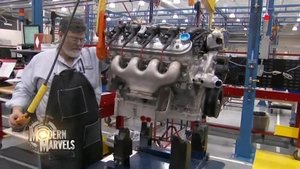
S13 Ep40
6.3
20th Sep 2006
Buckle up for a rip-roaring ride through the world of extreme horsepower. Experience the fastest accelerating cars on earth. Find out how horsepower was first coined as a marketing tool for the steam engine in the early 1800s and meet the horsepower police--the Society of Automotive Engineers who test today's most powerful car engines. Feel the amazing power of Unlimited Hydroplane racing as 3-ton boat-beasts careen across water at speeds of over 200 miles per hour. Journey to the bowels of an enormous container ship where the world's most powerful diesel engine provides over 100,000 horsepower. At the Hoover Dam, watch as it harnesses the enormous power of water. Explore the 80,000 horsepower pumping units at the Edmonston Pumping Plant that delivers 2-billion gallons of water a day to thirsty Californians. And sit behind the steering wheel of a new generation of hybrid cars that boast 400-horsepower yet get 42 miles per gallon of gas.
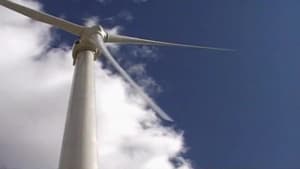
S13 Ep41
6.3
20th Sep 2006
Take an in-depth look at the most proven and reliable sources: solar, wind, geothermal, biofuels, and tidal power. From the experimental to the tried-and-true, renewable energy sources are overflowing with potential... just waiting to be exploited on a massive scale.
S13 Ep46
6.3
27th Sep 2006
It's one thing to make a 60-foot-long jet aircraft seem invisible, but quite another to hide a 400-foot-long warship from the prying eyes of an enemy. Explore the challenging world of stealth technology at sea and how modern engineering can make our largest warships appear to be tugboats or fishing vessels.

S13 Ep54
6.3
29th Nov 2006
A glass a day is said to keep the doctor away. A defeated Napoleon drowned his sorrows in it; Thomas Jefferson became obsessed with it. Wine is an integral part of our culture and more wine is consumed today than ever before. Supermarket shelves that once carried only box wine and jugs are now lined with wines from Australia, Chile, and South Africa. Aerial imaging and infrared photography once used by NASA to map the moon is now employed by wineries to analyze soil, vine vigor, and even disease. Paying tribute to wine's unique history we will travel the world over to explore wineries, the worlds' most historic wine cellar and the oldest restaurant in Paris.

S13 Ep56
6.3
6th Dec 2006
In March of 2005, the BP Refinery in Texas City, Texas, suffered a series of explosions that decimated a large portion of the facility and killed 15 workers. Then the unusual series of events that caused American Airlines flight 587 to fall from the sky. What happened in Times Beach, Missouri, when a local waste hauler oiled down dusty roads with oil that was laced with dioxin? Look at what went wrong with NASA's Skylab in 1974 and finally examine the fire that destroyed the gas company, Praxair, in June of 2005.
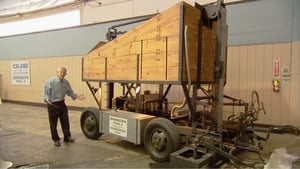
S14 Ep5
6.3
11th Feb 2007
The solid form of life's precious elixir has played a key role in fashioning our history and is making its mark as an unusual tool of technology. Explore how Earth's ice originated and recount how ice age glaciers sculpted North America. Take an inside look at Colorado's National Ice Core Repository to see how ice drilled from Antarctica and Greenland is an invaluable archive of past climate, and at a Canadian research lab experts demonstrate the dynamics and dangers of icebergs. See how Greenland's massive ice sheet may be sliding faster than ever toward the sea. Take a look at how scientists are using Antarctica's ice as a gigantic lens to probe the secrets of the universe.
S14 Ep6
6.3
11th Feb 2007
It traps a treasure of energy on the ocean floor, and confounds scientists still trying to solve why it’s so slippery. We’ll venture inside NASA’s Icing Research Tunnel in Ohio, and then it’s off to Salt Lake City’s Olympic Oval which boasts “the fastest ice on Earth.” Dive to the ocean floor to collect and analyze a unique form of ice called methane clathrates–cages of ice encasing pressurized natural gas. Scientists believe that if only one percent of the world’s ice-entrapped methane could be harvested, it would more than double our current supply of natural gas. Other highlights include the search for extraterrestrial ice and a trip inside the studio of a chainsaw-wielding artist as he sculpts a masterpiece.
S14 Ep13
6.3
18th Apr 2007
Soldiers, machines, and supplies are only effective if they arrive at the battlefield in time. Explore the history and the technology behind the machines that do the heavy moving in times of war.
S14 Ep32
6.3
3rd Sep 2007
In this episode we are presented with the technology and gadgets used while filming Star Wars. It also explores some of the real or possible technologies that were inspired by various Star Wars movies and TV shows.
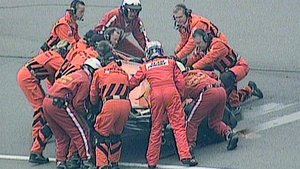
S15 Ep21
6.3
10th Jul 2008
Explore collisions that shake our world from the astronomic to the subatomic. Indy car racing; motorcycles; skydiving; meteorites; and subatomic particles.
S16 Ep2
6.3
21st Jan 2010
Each year in the U.S., 280 million hens lay 80 billion eggs, one of the world's most affordable sources of protein. We'll chart the "journey of the egg" from henhouse to breakfast table…from massive traditional Iowa farms, where millions of eggs move from hens to delivery trucks without being touched by human hands…to "cage-free" and "pasture raised" farms where chickens have more room to roam but consumers pay the price. Find out what labels like "Grade A, Organic" and "Omega-3 Enhanced" really mean. See how powdered eggs get made and what happens to the billions of whites and yolks that go their separate ways. Try the world's largest omelet, made from an ostrich egg, the equivalent of 24 chicken eggs. How about some pickled eggs or "century" duck eggs? And prepare to be awed by the "Michelangelo" of the egg-shell world as he sculpts egg shells less than 1/32 inch thick into jaw-dropping works of art.
S16 Ep6
6.3
2nd Mar 2010
Frustrations are high in the Myers garage as Burt and Jason have a considerable amount of work to do on their cars after last week's race. The S & R garage is on easy street after a win by rookie Jonathan Brown and Puddin' invites the boys to a wine tasting to celebrate. A call from the Myers garage to S & R raises the tension level to a boiling point and the threat of violence hangs over the stadium. With everyone else distracted, will Tim Brown coast his way to another win this week?
S16 Ep17
6.3
3rd Jun 2010
Take a look at the tallest doors in the world at the Vehicle Assembly Building at Kennedy Space Center. Visit a company that makes blast doors and bulletproof doors. Learn about the surprisingly complex process involved in making home doors, as well as what goes into those commercial entries and exits we use everyday–the revolving door and the turnstile. At the Southwestern Foundation for Biomedical Research, enter through an airlock into their level 4 biohazard lab. The Cleveland Federal Reserve doesn't even send people into their vaults; its robots go in and out. Try some aviation entries and exits–the jet way used to board a plane, the airplane emergency exit procedures we hope to never use, and ejection seats, the fastest exit anywhere. Then, an engineering firm that designs hidden doors will take viewers to see a few of their secret entries. Finally, take a quick look at doors that go nowhere, at the Winchester Mystery House.
S16 Ep19
6.3
17th Jun 2010
We can't live without them and yet they didn't even exist a couple of decades ago. We'll count down our list of the top ten technological innovations of the last generation. Have they made human existence exponentially better, or more fragmented and precarious? Tune in to find out what they are, and how they've impacted our lives.
S17 Ep9
6.3
21st Dec 2010
Get behind the wheel and take control of the some of the largest, fastest, most powerful machines on the planet. These aren't your average vehicles–and handling one of these rides is unlike anything else. But you need more than just a learner's permit to take control of these vehicles…you need training, experience, and above all, guts–if you plan to sit in the Driver's Seat.
S18 Ep8
6.3
19th Dec 2011
U.S. soldiers today face enormous challenges, often stationed in desolate locations behind enemy lines. Keeping them protected is priority number one–and the military is making enormous leaps in devising a wide array of high-tech equipment to protect today's soldier. From elaborate elite training facilities, to GPS-guided air drops, to revolutionary high-tech tents and fire-retardant uniforms, we explore the science and technology of building, operating and protecting a base in a warzone.
S18 Ep11
6.3
9th Jan 2012
Hundreds of years before steel and plastic, wood was the building block of America. But even today, it touches every aspect of our lives. It's underneath our feet and flying through the sky, propping up skyscrapers and making burgers fry — from the historical, to the modern, to the timeless, we explore the surprising ways we cannot live without WOOD.
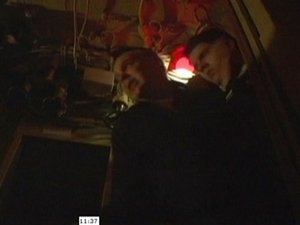
S10 Ep65
6.4
28th Oct 2003
The amazing machines of human invention most often do our bidding with uncomplaining proficiency. But when they go wrong, they exact a terrible wage. In August 2000, the Russian submarine EM Kursk /EM glided through the depths of the Arctic Sea. But the demands of the Cold War had planted the seeds of disaster in this great ship–118 men would pay with their lives. Their deaths would bring about an enormous step forward in Russia’s evolving democracy. Based on James Chiles’s book EM Inviting Disaster /EM .
S13 Ep13
6.4
3rd May 2006
Man has always had a need to move large amounts of earth. In this episode, we profile the technological advances which have allowed shovels to become absolutely enormous, capable of carrying 200 tons of earth in one load today.
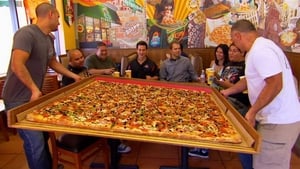
S19 Ep4
6.4
27th Aug 2013
Modern Marvels is going big, and counting down. We take the "best of" Modern Marvels and give you the MEGA Top 10 countdown. On this edition, the top ten guilty pleasures you just can't resist… America's Favorite Foods.
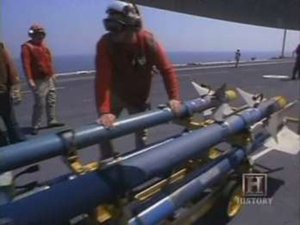
S9 Ep13
6.4
26th Mar 2002
A look at siege machines that convert energy into mechanical force to go over, under, or through fortified or fixed defenses too strong for conventional force. These engines range from man's first long-range missile weapon, the slingshot, to the laser cannons and satellite-destroying robots of the 21st century. All of these machines are designed to breach barriers–castle walls, entrenched troops, even outer space. When the going gets tough, the tough get siege machines.
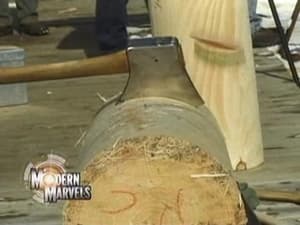
S9 Ep23
6.4
12th Jun 2002
Blade implements have been a part of civilized man's arsenal since the Paleolithic Age, when sharp tools were chipped off of flint or obsidian. But with the discovery of metallurgy, people were able to forge stronger, more versatile blade implements. We visit an axe-throwing contest in Wisconsin for an introduction to the least subtle of the blade tools. Then we visit a swordsmith and an experienced swordfighter who work in traditional methods from ancient sources, and review the history of knives.
S9 Ep40
6.4
30th Aug 2002
Examines how the great 19th-century peacetime invention developed into a powerful war machine, forever altering how, when, where, and why battles were fought. Also looks at the brave men and women who kept the military Iron Horses running, often at their own peril.
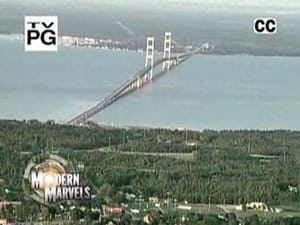
S10 Ep8
6.4
5th Mar 2003
Until recently, the Mackinac Bridge was the longest suspension bridge in the world. One of the top engineering marvels of the 20th century, the bridge spans the 4-mile wide straits of Mackinac, where Lakes Huron and Michigan come together. The Mighty Mac connects the pastoral northern mainland of Michigan with the state's heavily forested Upper Peninsula and stands as a testament to the dreams, determination, and hard work of a small few who created a true masterpiece of modern engineering.
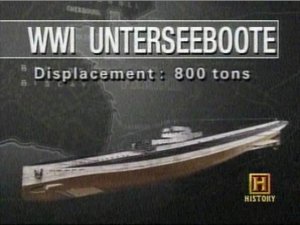
S10 Ep64
6.4
25th Oct 2003
They dominated the Atlantic Ocean from Europe to the eastern coast of the U.S. They struck against Allied shipping with near impunity, holding England in a stranglehold for the first years of WWII–until sonar was developed. Now the hunters became the hunted. Meet German commanders and crewmen who survived service in “Iron Coffins”.
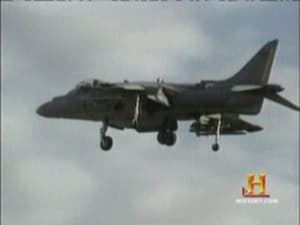
S11 Ep15
6.4
28th Apr 2004
An in-depth look at the modern era's most complex, deadly, and controversial engineering failures. With the aid of 3-D animation, forensic experts, and footage of disasters, we seek to understand what went wrong and how mishap led to remedy. Stories include: the Marines' AV-8 Harrier "Jump Jet"; the Ford Explorer/Firestone rollovers; fire on the Piper Alpha offshore oil rig; derailment of a high-speed train in Germany; and computer errors that brought the world to the brink of accidental nuclear war.

S12 Ep13
6.4
28th Feb 2005
An in-depth look at the technology conceived or developed by America’s first billionaire. A passionate aviator, Howard Hughes built and flew planes that broke speed records, and developed war machines, spy aircraft, and commercial airliners. Despite the impressive heights reached by his technological empire, his health and mental well-being were fragile. During his last years, he wasn’t seen publicly or photographed, rarely left the hotel suites he occupied, and was terrified of germs. But when Hughes died in 1976, he left a huge legacy in aviation and technology. When we board an airliner, view TV via satellite, or marvel at America’s military might, we might do well to remember the risk-taker who flew faster than his peers and was at heart an aviator obsessively dedicated to both the art and science of flight.
S12 Ep37
6.4
27th Jul 2005
A simple flush and it’s forgotten. But haven’t you secretly wondered where it all goes when we go? Join us as we explore this less-than-polite topic, and examine the network of underground pipes and tunnels that carries human waste and excess storm water away. From ancient Rome’s pristine sewage-conveying systems, through the disease-spreading, out-the-window system of Europe in the Middle Ages, and into the progressive sanitation engineering of the 19th and 20th centuries, we go with the flow of sewage history. And we sift through the flotsam and jetsam of our cities’ sewer systems and delve into the sewers of Paris, Boston, and Los Angeles to study waste management’s evolution. We meet a sewer diver (and his robotic counterpart) who inspects and ensures the efficient operation of the conduits; decipher the myths about “treasures” and creatures found in the murky depths; and find out exactly where it goes, how it gets there, and how we’ve learned to use it to our benefit.
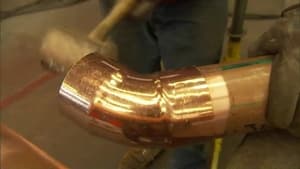
S13 Ep37
6.4
13th Sep 2006
It transports electricity, water, and heat. It brings music to our ears and beauty to our eyes. Copper--its impressive traits, long history, and how it's mined. This versatile metal’s most famous attribute is its ability to conduct electricity.
S13 Ep55
6.4
29th Nov 2006
In America's orchards and farm fields, the constant struggle between hand labor and mechanization has produced dozens of efficient and sometimes bizarre harvesting methods. Learn the secrets of the orchard manager and his ladder crew as they check fruit pressures and barometric readings. Visit California's largest fruit packing house and try to keep up with 10-fruit-per-second conveyors. Then off to the corn fields of Nebraska and the cranberry marshes of central Wisconsin. Finally go underground to the world's largest mushroom farm where the harvest takes place in limestone caverns that run some 150 miles. From fruit tree picking platforms to cranberry beaters and corn pickers, farmers constantly strive to speed the harvest.
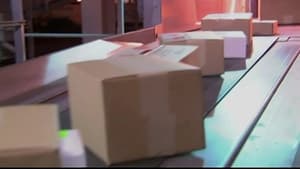
S16 Ep11
6.4
22nd Apr 2010
Got something strange to deliver? From pizza to packages, we'll show you how it's packed, labeled and shipped. Head down the highway carrying gigantic wind turbine blades. See how UPS got China's invaluable terra cotta warriors to a Los Angeles art museum. Deliver luxury yachts aboard a submersible carrier ship. Ride to the track with prized thoroughbreds on their own special jet. Want dinner and a movie? Sounds like a visit to Netflix headquarters and Papa John's Pizza. Ride radical with bike messengers in New York City, and deliver a donor kidney to a waiting hospital. Take a tour of the UPS Worldport hub in Louisville, Kentucky, a mammoth center with delivery docks for 100 jets, and handles 1.2 million packages a day.
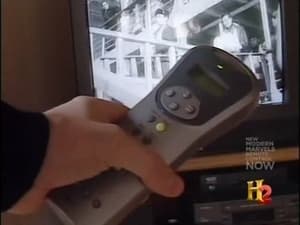
S9 Ep9
6.4
26th Feb 2002
Press a button and you can soar in the sky, command a virtual pet, adjust the thermostat in your house while driving in your car, and, of course, change the channel on your TV. The remote control revolution began in 1898, when inventor Nikola Tesla successfully controlled a 6-foot-long iron-hulled model boat using radio waves. Today, Microbots are the latest remote control marvel. We'll see how, in our technologically-evolved world, pressing a button to get what we want has become commonplace.
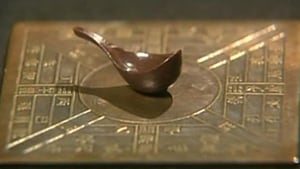
S9 Ep39
6.4
27th Aug 2002
It was the world’s largest underground factory–seven miles of tunnels built to manufacture Hitler’s secret weapons, primarily the V-2 rocket. But Nordhausen kept more than one secret. Technology and torture went hand-in-hand–25,000 concentration camp workers died there–and some of those associated with Nordhausen later helped take America to the moon.
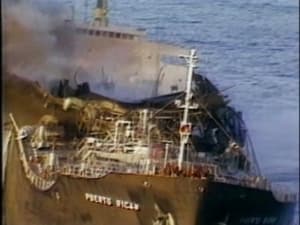
S11 Ep52
6.4
19th Oct 2004
Disasters investigated include: the 1984 Union Carbide debacle in Bhopal, India, where a toxic chemical release killed 3,800 people and left 11,000 with disabling respiratory ailments; and the 2003 sudden collapse of a 10-story parking garage at the Tropicana in Atlantic City, New Jersey that killed four and injured 20. We find out why a series of structures in Hutchinson, Kansas mysteriously caught fire and exploded in 2001; and examine the 1933 construction of a canal ordered by Soviet dictator Joseph Stalin that later proved to be nearly useless and cost many lives. And we get to the bottom of a maritime mystery, when a tanker carrying non-explosive materials in San Francisco Bay blew up in 1983.
S15 Ep26
6.4
18th Aug 2008
How iron mined in Minnesota is made into steel; iron weapons revolutionize warfare; military metallurgists customize weapons and demonstrate their firepower; iron magnets.
S15 Ep28
6.4
28th Aug 2008
Dangerous roads throughout the world are examined, including Bolivia's "Death Road" and Highway 99 in California. Also: a visit to the Federal Highway Administration's safety-test laboratory.
S18 Ep7
6.5
5th Dec 2011
Candy is America's sweetest guilty pleasure–so appealing that we spend $25 billion annually to experience it. Our cameras venture from Chicago to Santa Cruz, California to show you that behind every delicious bite is a fascinating story of imagination and innovation. Fourth-generation candy makers Nick and Gino Marini reveal how they're redefining the limits of confectioneering with their latest sensation…chocolate-covered bacon. The crew that makes the iconic red and white Starlight Mints demonstrates how they give each piece its trademark color pattern. As your mouth waters throughout the hour, you'll also discover they key ingredient that gives Lemonheads their sour punch…and the surprising substance that puts the polish on Mike and Ikes. And you'll be shocked to learn how little sugar is in cotton candy.

S7 Ep16
6.5
12th Jun 2000
In less than a century, the world went from dirt tracks to highways, from propeller planes to space travel, from sailboats to supertankers. And in the process, we have created a glut of traffic on roadways, railways, airways, and seaways–traffic that must be controlled, managed, and regulated. We’ll see how it’s done.
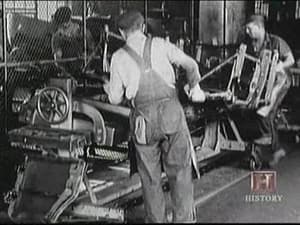
S7 Ep29
6.5
16th Oct 2000
According to the Encyclopedia Britannica, an assembly line is an “industrial arrangement of machines, equipment, and workers for continuous flow of workpieces in mass production operations.” While the basic principles of the assembly line technique have not changed in one hundred years, the people and the products that exploit the technique have. Throughout the hour, we will hear from four generations of assembly line workers who will provide some perspective, heart and soul for this revolutionary production technique.
S8 Ep30
6.5
15th Oct 2001
If walls could speak…And in the next two hours they will, as we build a house literally from the ground up, step by step, room by room. We’ll pour the foundation, frame the walls, wire the electricity, install the heating, hang the drywall, tile the roof, and carpet the floors. All to show you how and why it’s done. We even take you back in time to see the bitter power struggles, accidental discoveries, and monumental breakthroughs behind today’s building methods and materials.
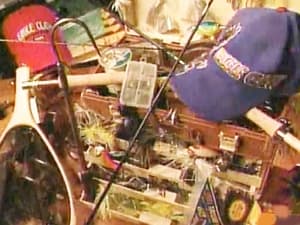
S9 Ep27
6.5
2nd Jul 2002
From ancient Egyptian fishing parties to today's high-tech bass tournaments, we untangle the fascinating technical history of man's quest to seduce creatures of the deep out of their watery world and into the frying pan. We trace the evolution of the basic rod and reel, from crude hickory poles with braided horsehair to ultra-light graphite wonder-rods with space-age nylon line, and examine the angler's glittering arsenal of spinners, spoons, plugs, and flies
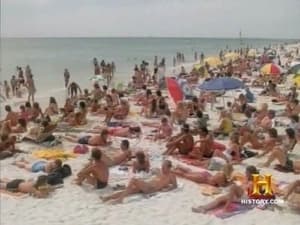
S9 Ep32
6.5
24th Jul 2002
Slap on your sun block and head to the ocean for a sizzling hour that explores the beach in a whole new way! We cover everything from Japan’s Seagaia, the world’s largest indoor beach, to boardwalks, dune buggies, surfboards, sunglasses, suntan lotion, wave pools, and more. We examine the development of each product and explain the technological advances that have been made over the years.
S9 Ep48
6.5
10th Oct 2002
An exciting series that takes viewers into the heart of action as it focuses on a particular machine from WWII, beginning with the story of its design and manufacture and showing the machine in combat, using vintage archive footage. Miniature cameras take viewers inside the machine to share with its crew the experience of war. In this episode, ride along in the thick of battle in the American M4 Sherman Tank, as it blasts its way into history and paves the way for the liberation of Europe.
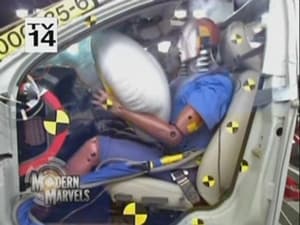
S10 Ep38
6.5
23rd Jul 2003
In the mid-1960s, the US lost an average of 55,000 people yearly to car crashes. Since then, the number of cars on the road has doubled, but fatalities have decreased by nearly a third. The dramatic reduction is the culmination of research and development that led to safer roads and cars and quicker emergency response. But car-crash technology’s future involves removal of its biggest threat–human drivers! Find out if computers and radar can prevent everything from fender-benders to pile-ups.

S1 Ep1
7.7
10th Dec 1993
The world’s largest concrete dam–and the largest concrete structure in the world–lies on the Columbia River in the State of Washington. B uilt in 1931, it is also one of the largest hydroelectric power plants in the world.

S1 Ep2
7.3
21st Jan 1994
The remarkable story of how the landmark New York City skyscraper was constructed during the depths of the Depression. Requiring 10 million bricks and 60,000 tons of steel beams and using a revolutionary technique to hold the steel girders in place–hot rivets–the world’s tallest building was completed four months ahead of schedule.

S1 Ep3
7.5
4th Mar 1994
Chronicles one of the most incredible engineering feats of all time: construction of the 51-mile canal that took 10 years to build and employed over 40,000 workers, 6,000 of whom died of yellow fever, malaria, and other horrors. An earlier, 9-year attempt by the French ended in failure and cost 20,000 lives.
S1 Ep4
7.5
20th Mar 1994
A large machine turned water city, cruise ships are exciting and new.

S1 Ep5
5.0
27th Mar 1994
Looks at how one man’s vision and the cooperation between the U.S. and England resulted in an instant, reliable transcontinental mode of communication in the mid-1800s. See how wealthy 33-year-old Cyrus West Field endured many failures and lost millions in his attempt to close the communication gap between the Old and New Worlds.

S1 Ep6
3.7
13th Mar 1994
The incredible tale of how Gutzon Borglum created the world's largest sculpture by carving the faces of four US presidents (George Washington, Thomas Jefferson, Theodore Roosevelt, and Abraham Lincoln) into the Black Hills of South Dakota. The four figures carved in stone pay tribute to the first 150 years of American history. The hour chronicles the "swiveled pointer" that Borglum put in each president's "head", and how workmen hung like spiders 6,000 feet above the ground to blast away 450,000 tons of rock.
Loading...
The first episode of Modern Marvels aired on December 10, 1993.
The last episode of Modern Marvels aired on August 08, 2022.
There are 705 episodes of Modern Marvels.
There are 23 seasons of Modern Marvels.
Yes.
Modern Marvels is set to return for future episodes.